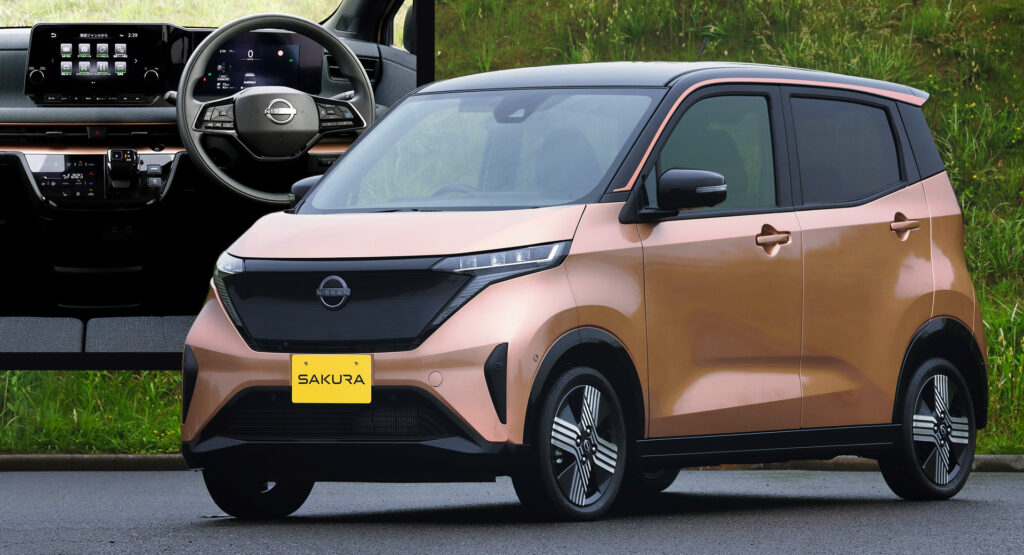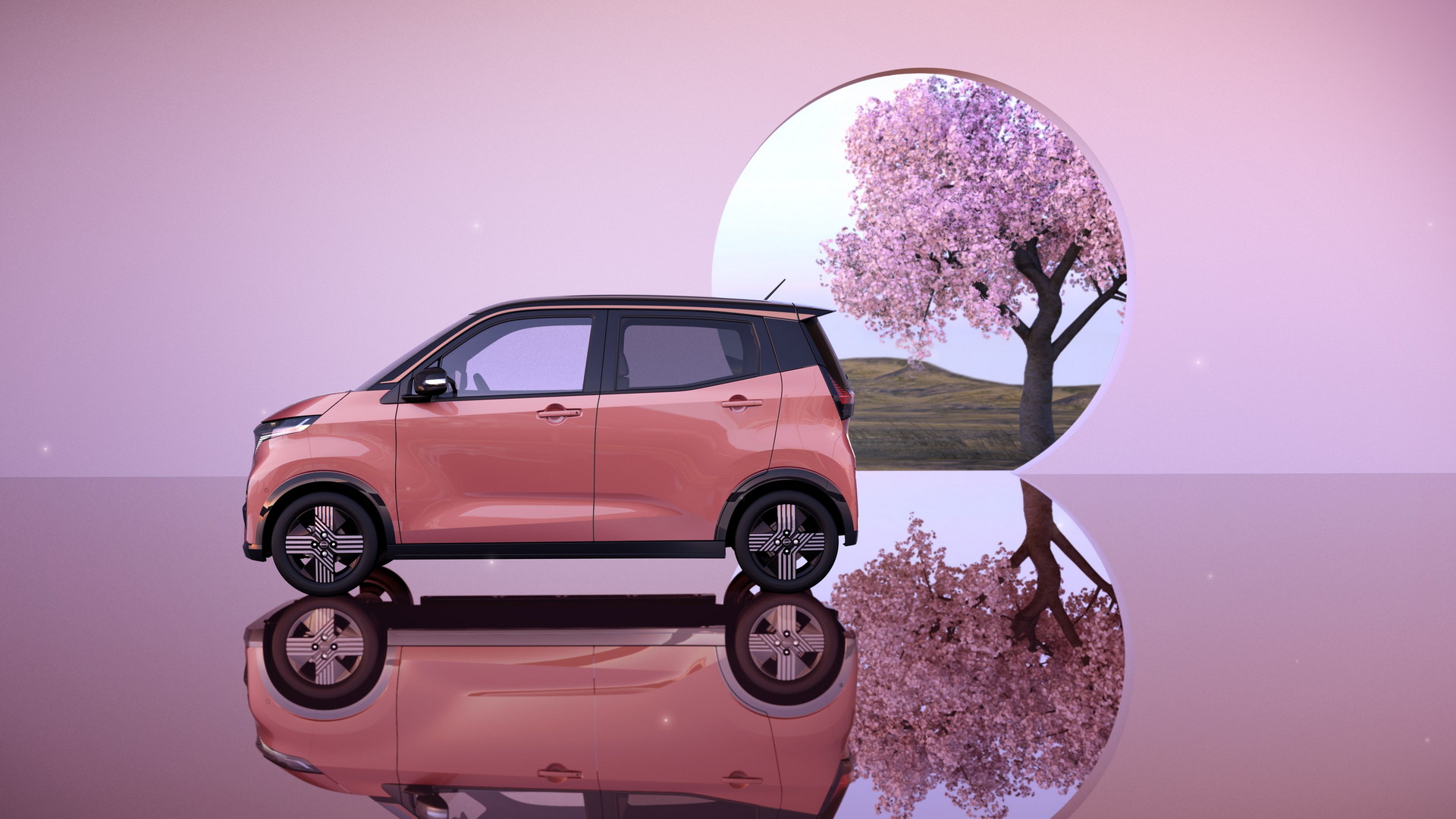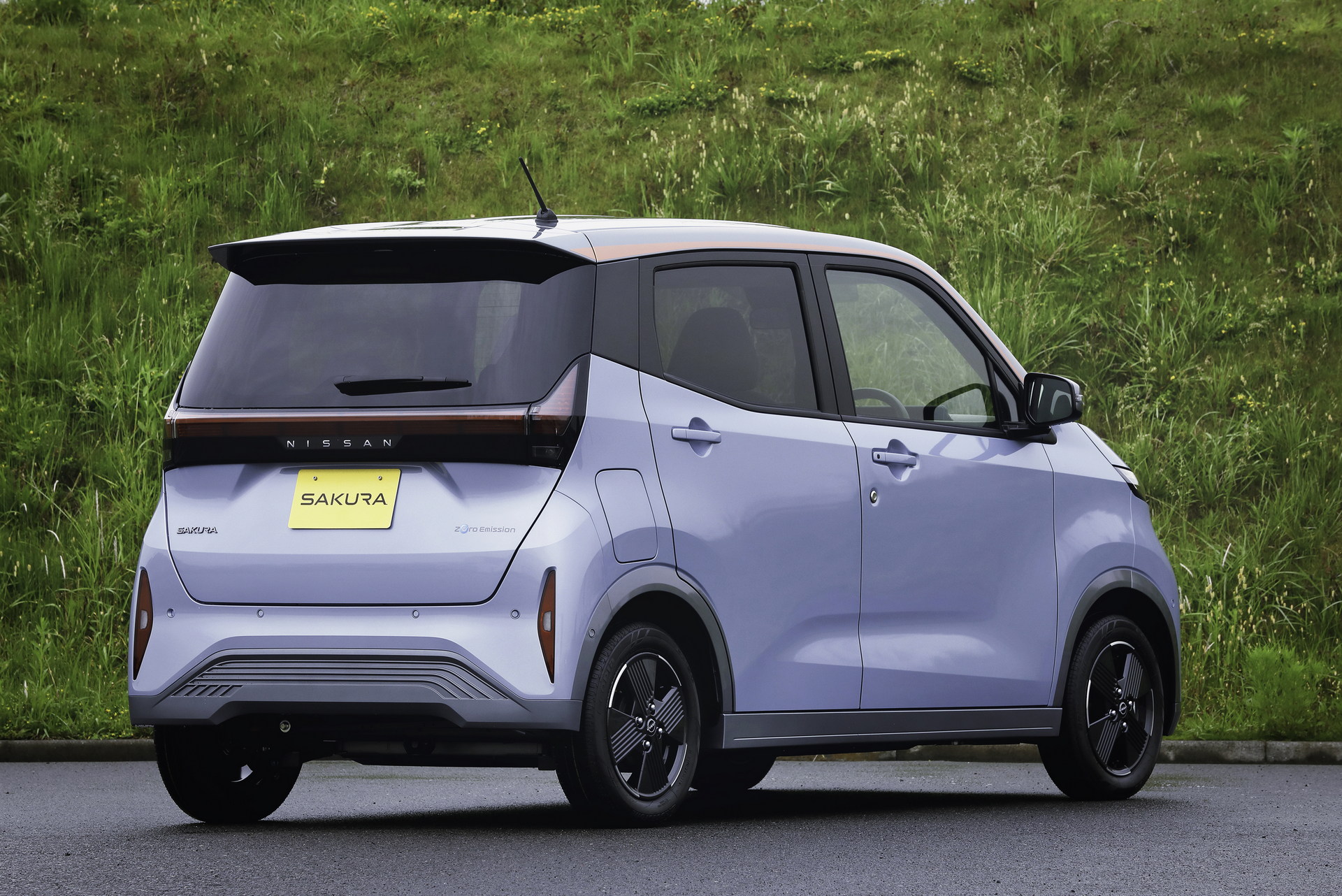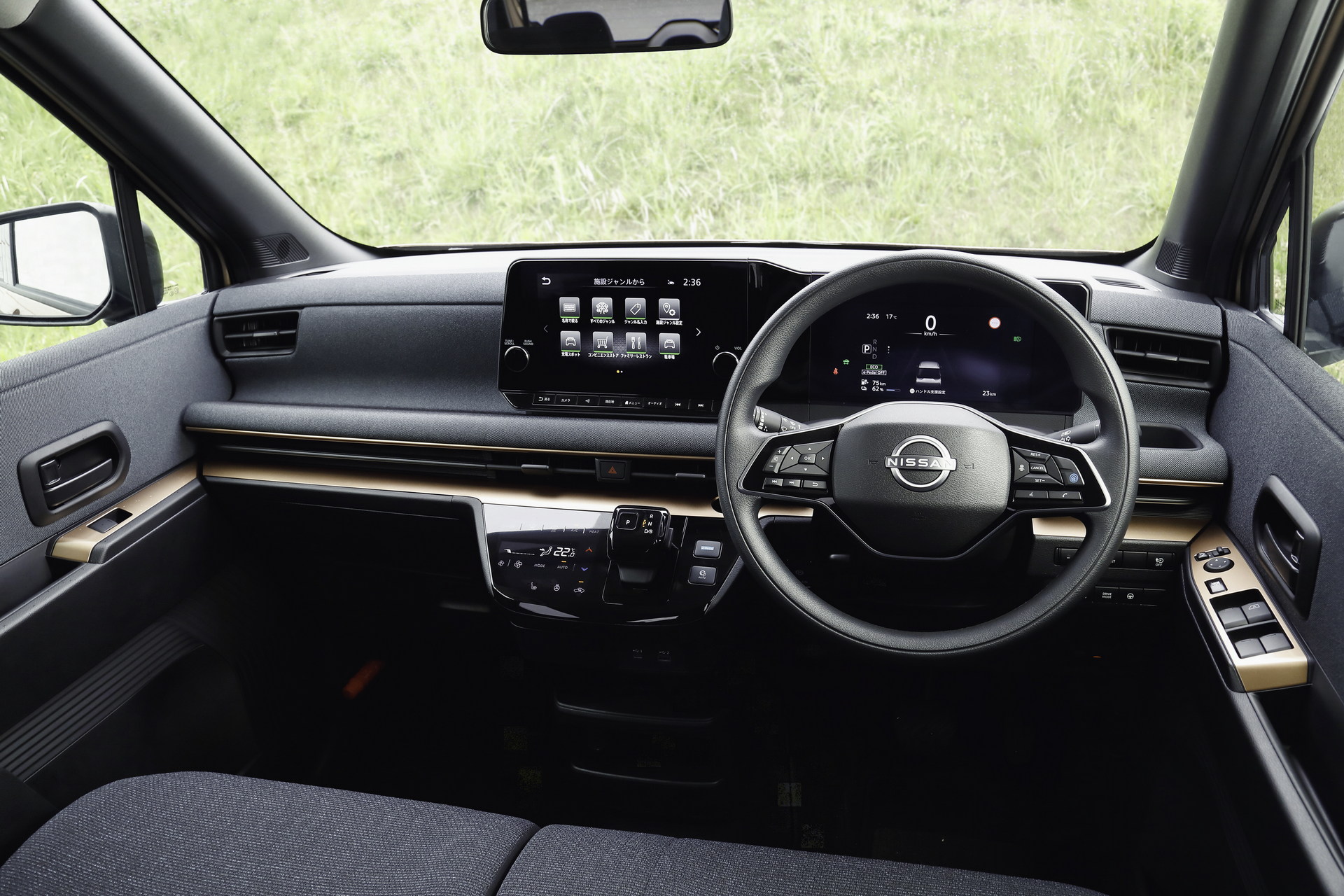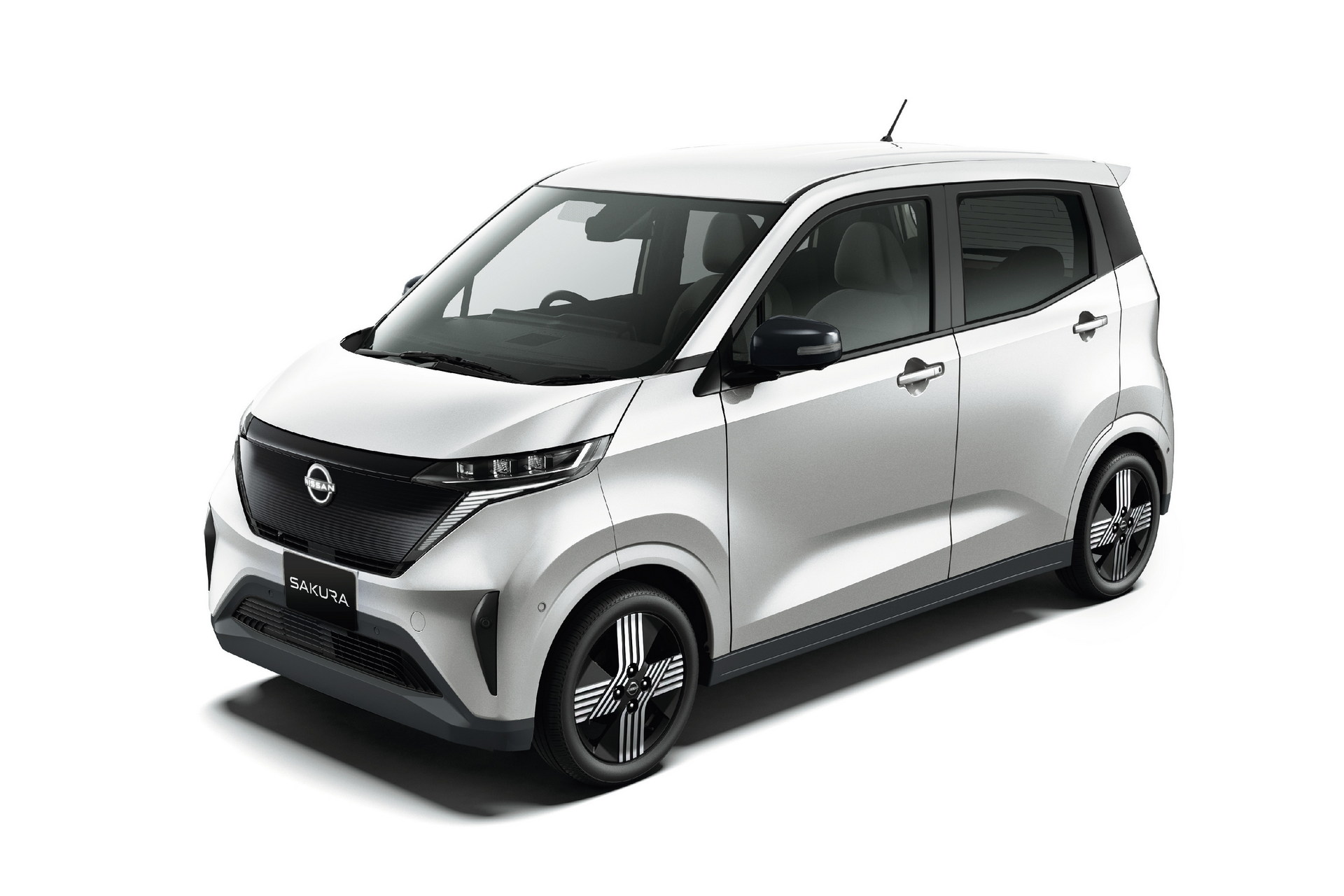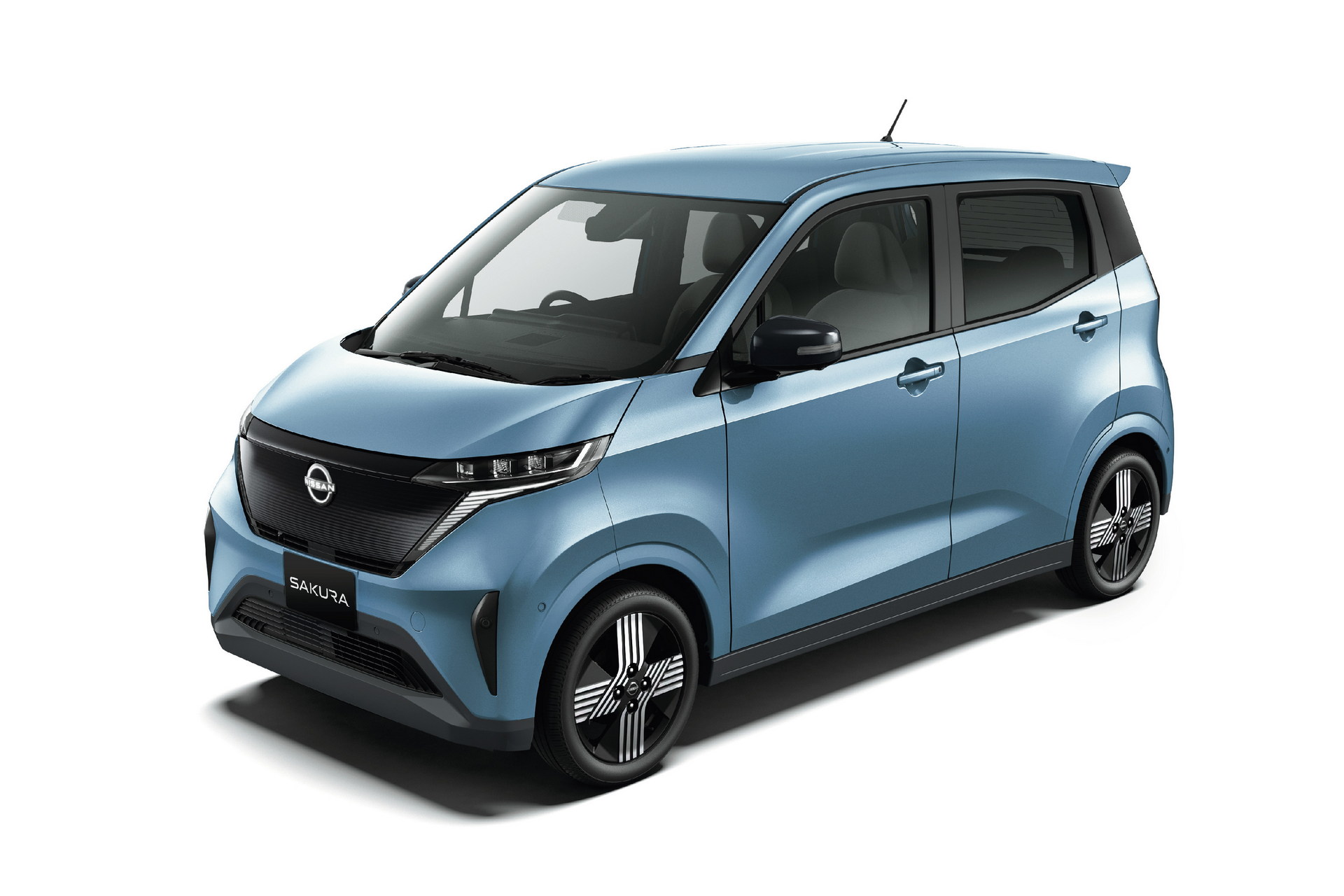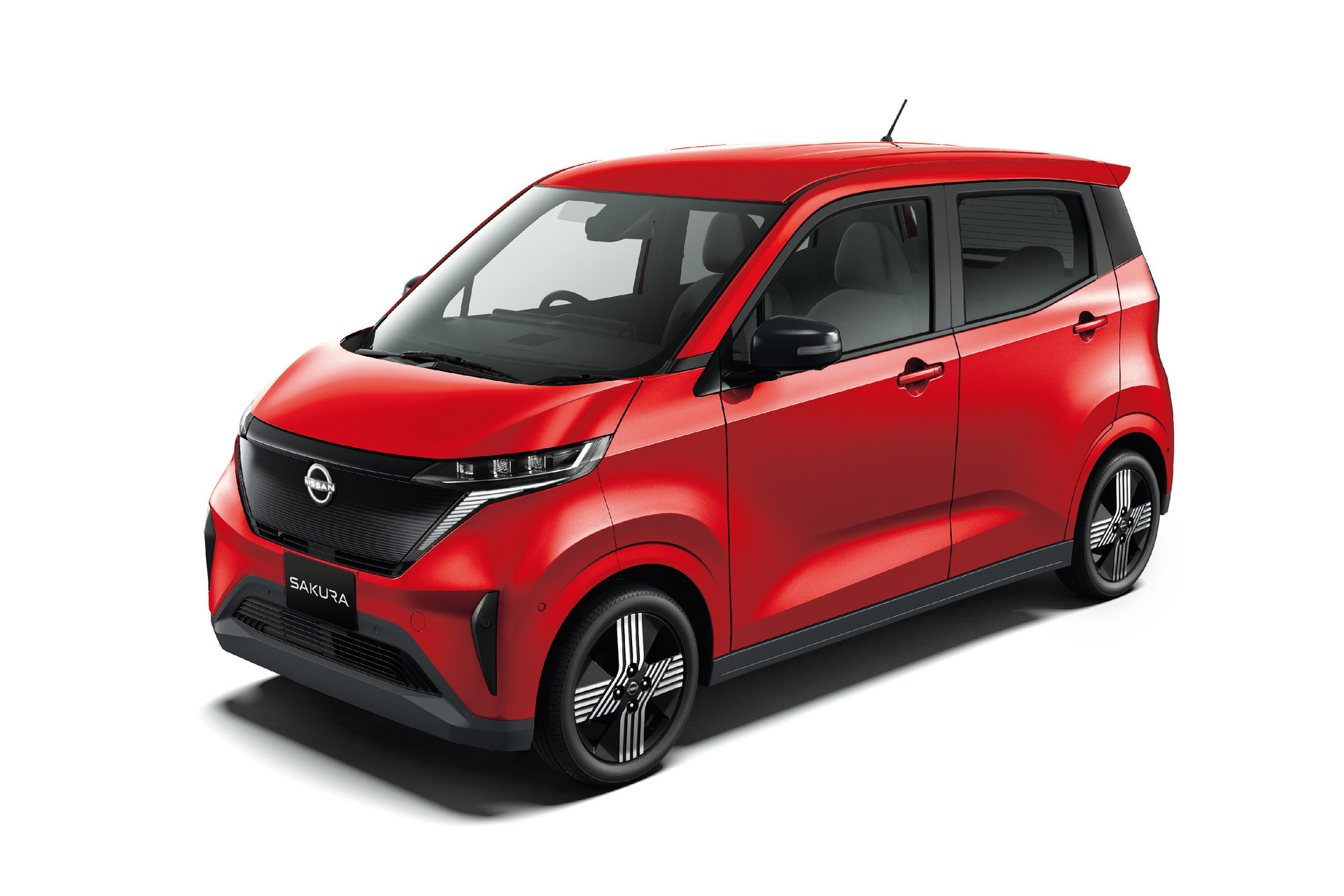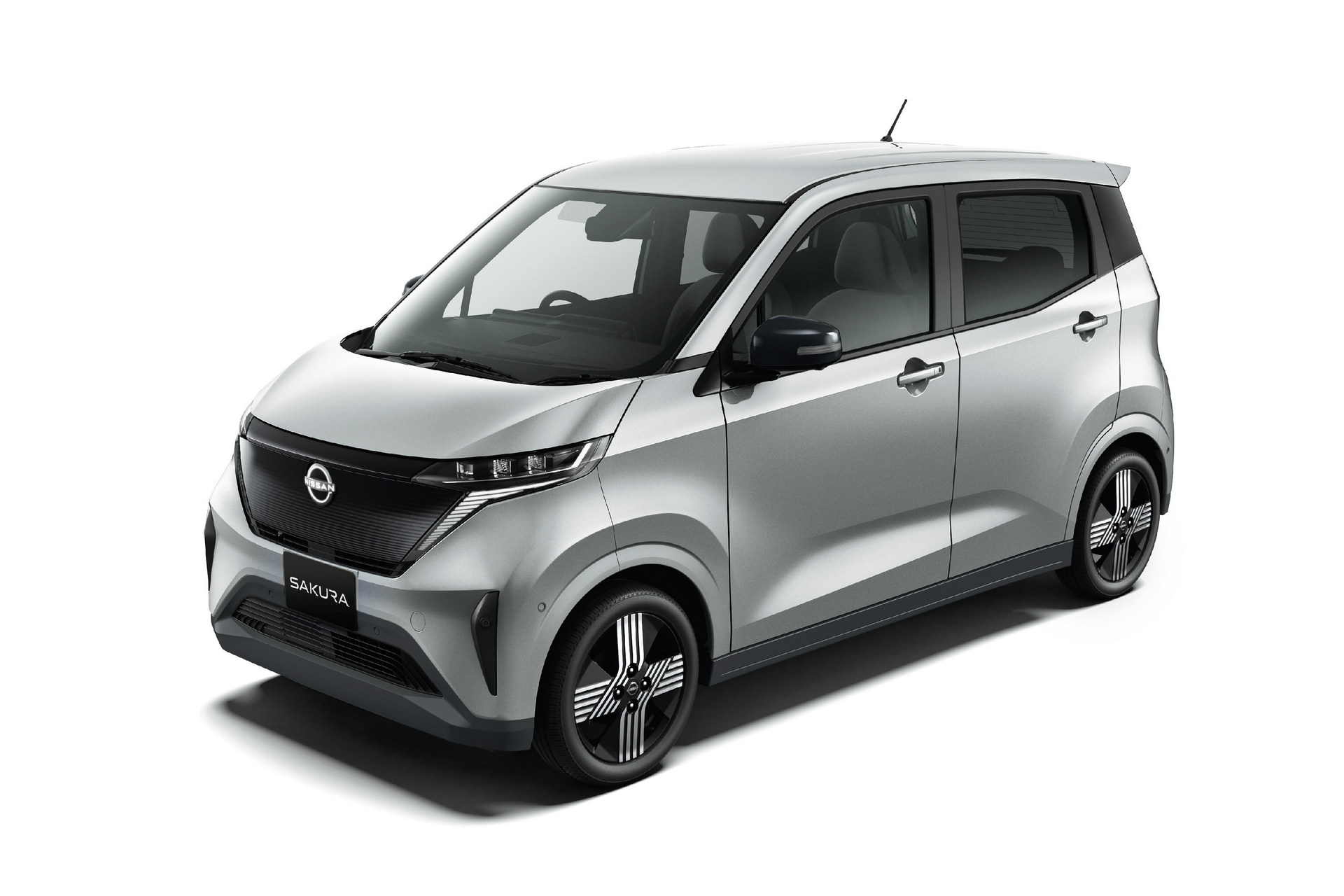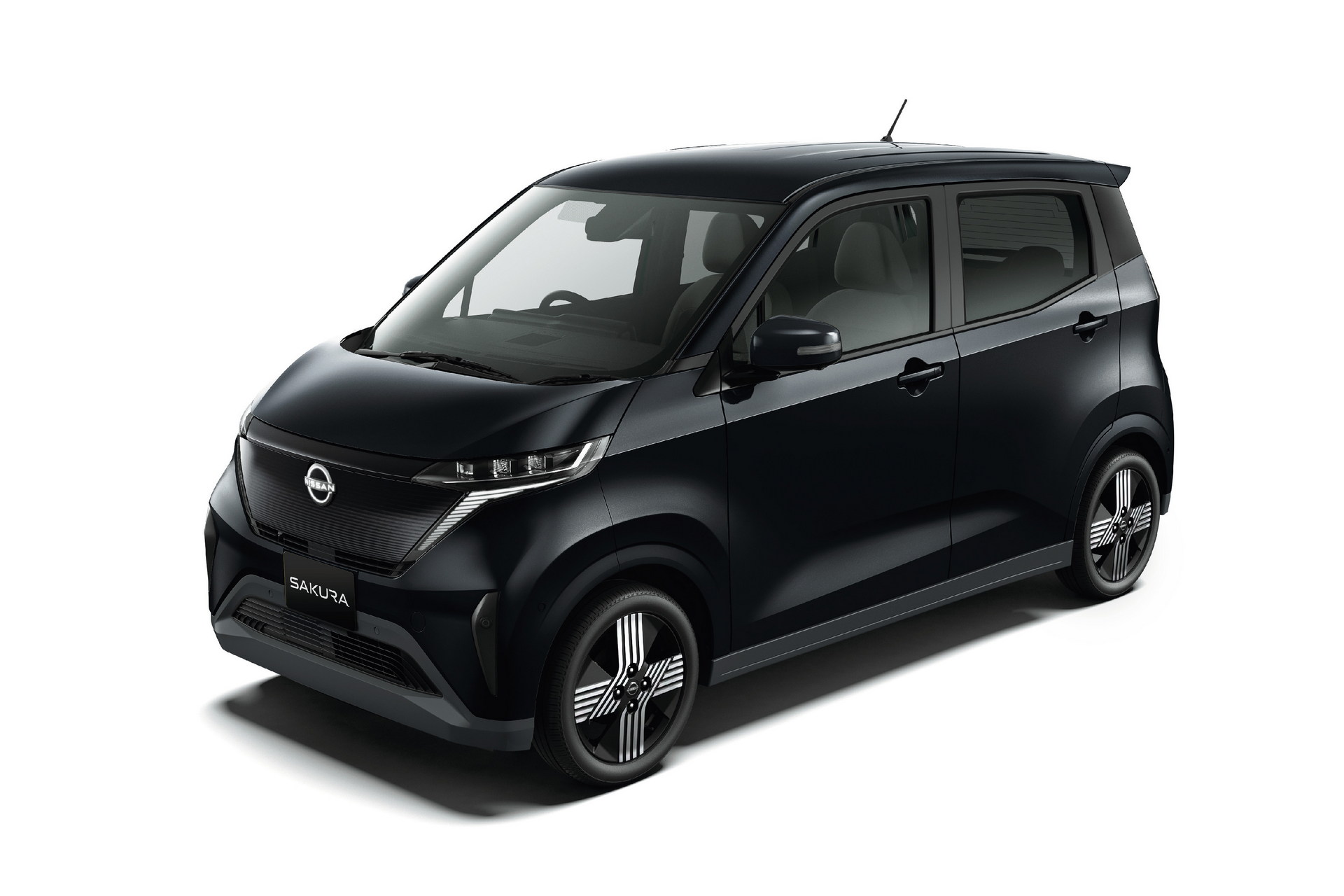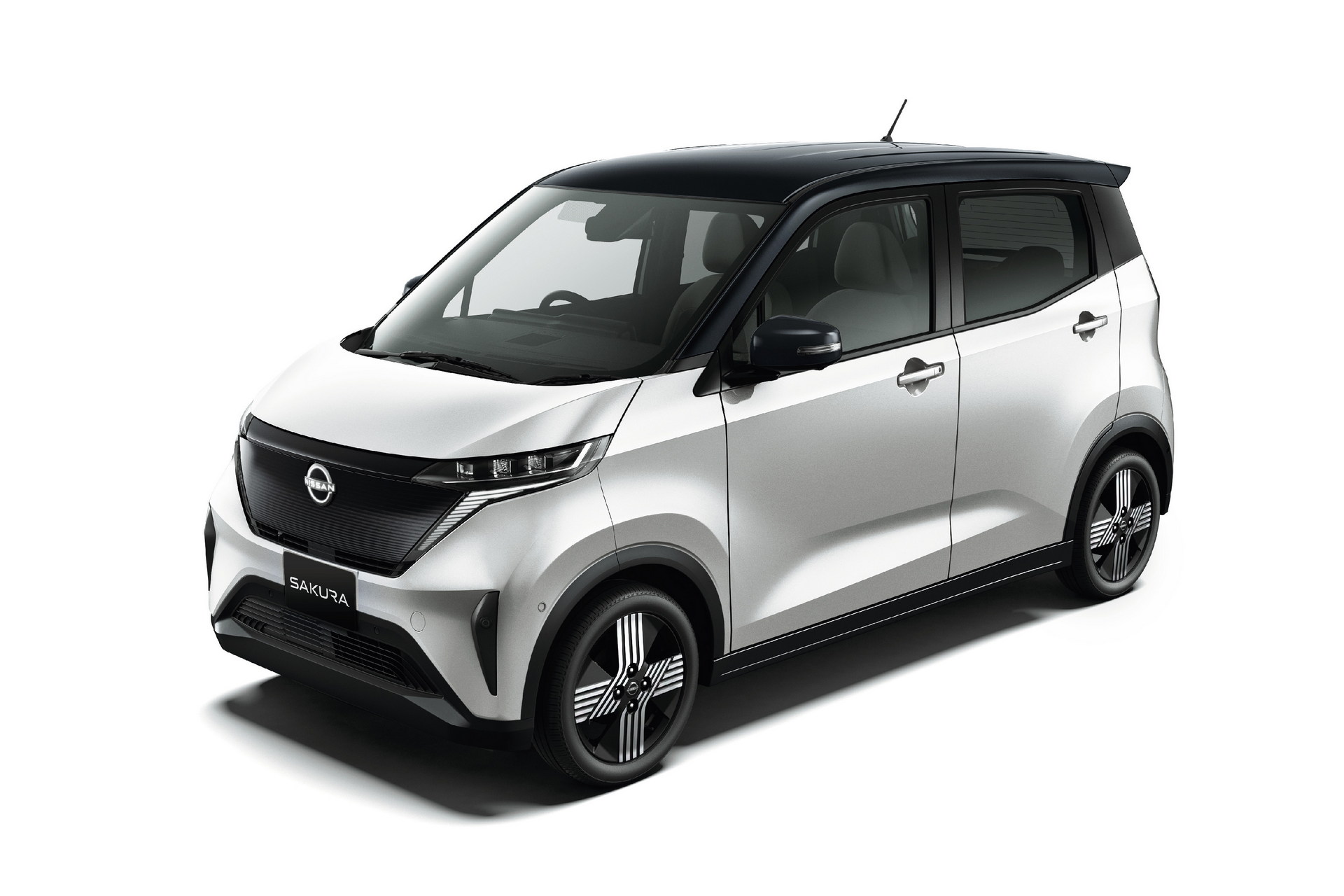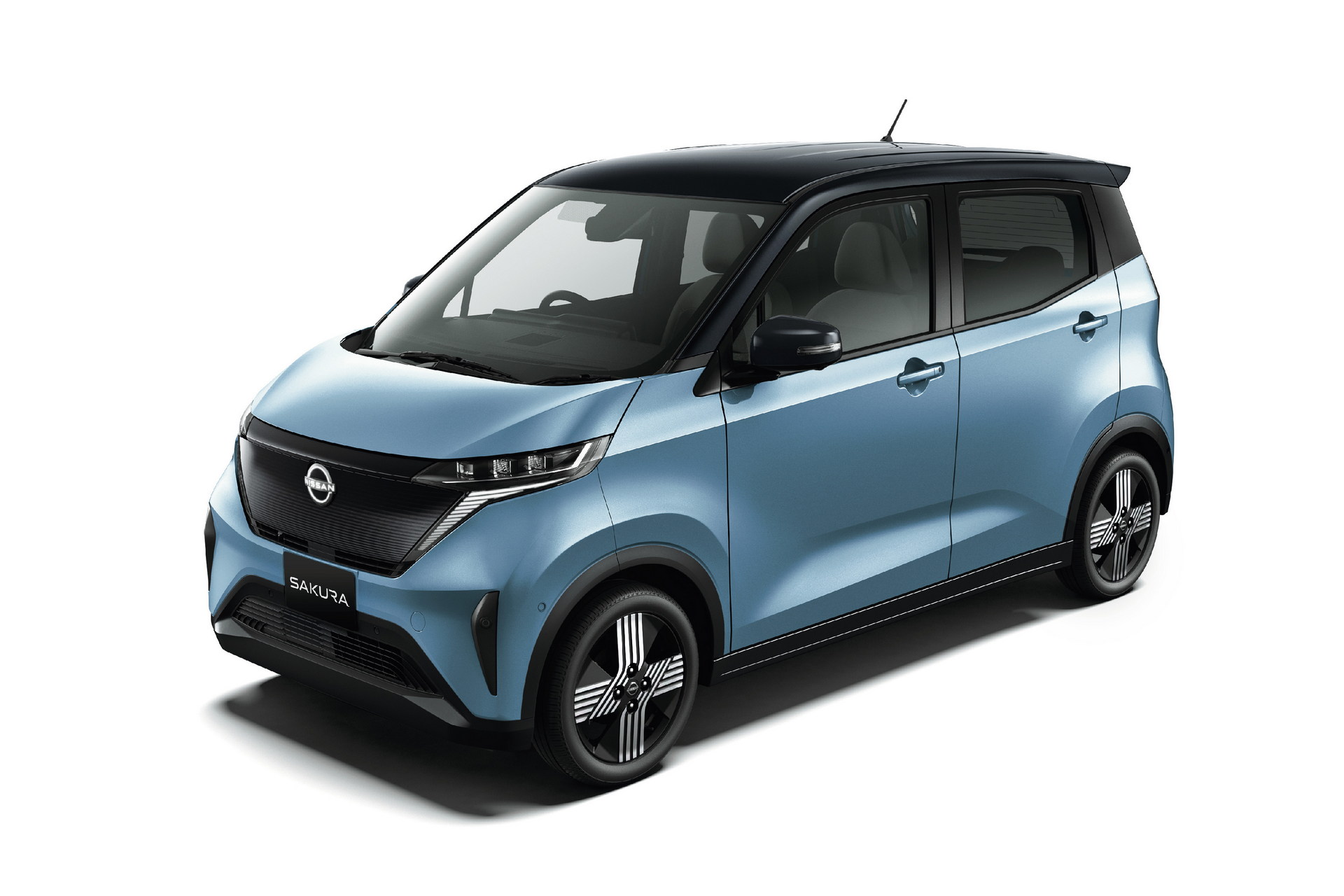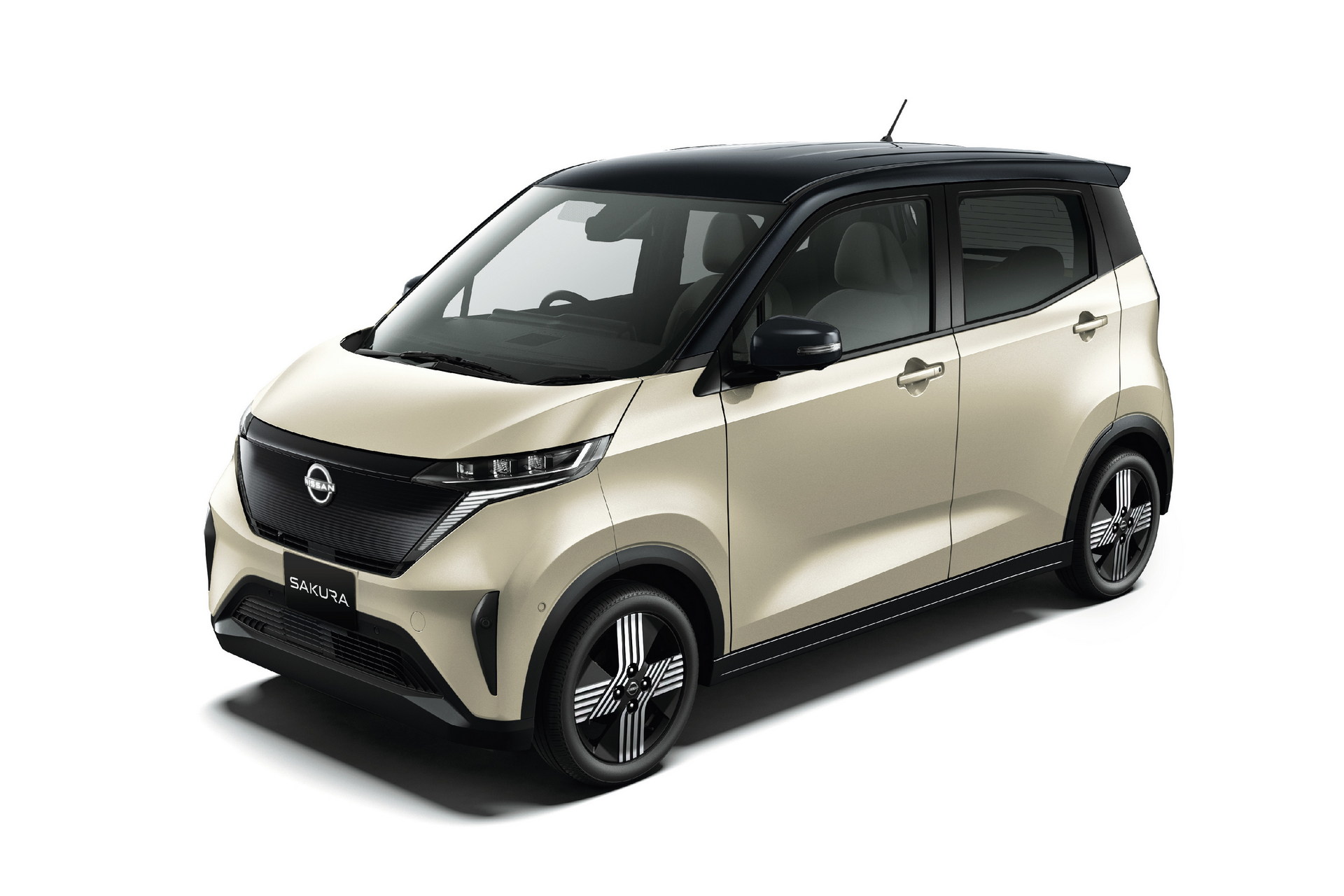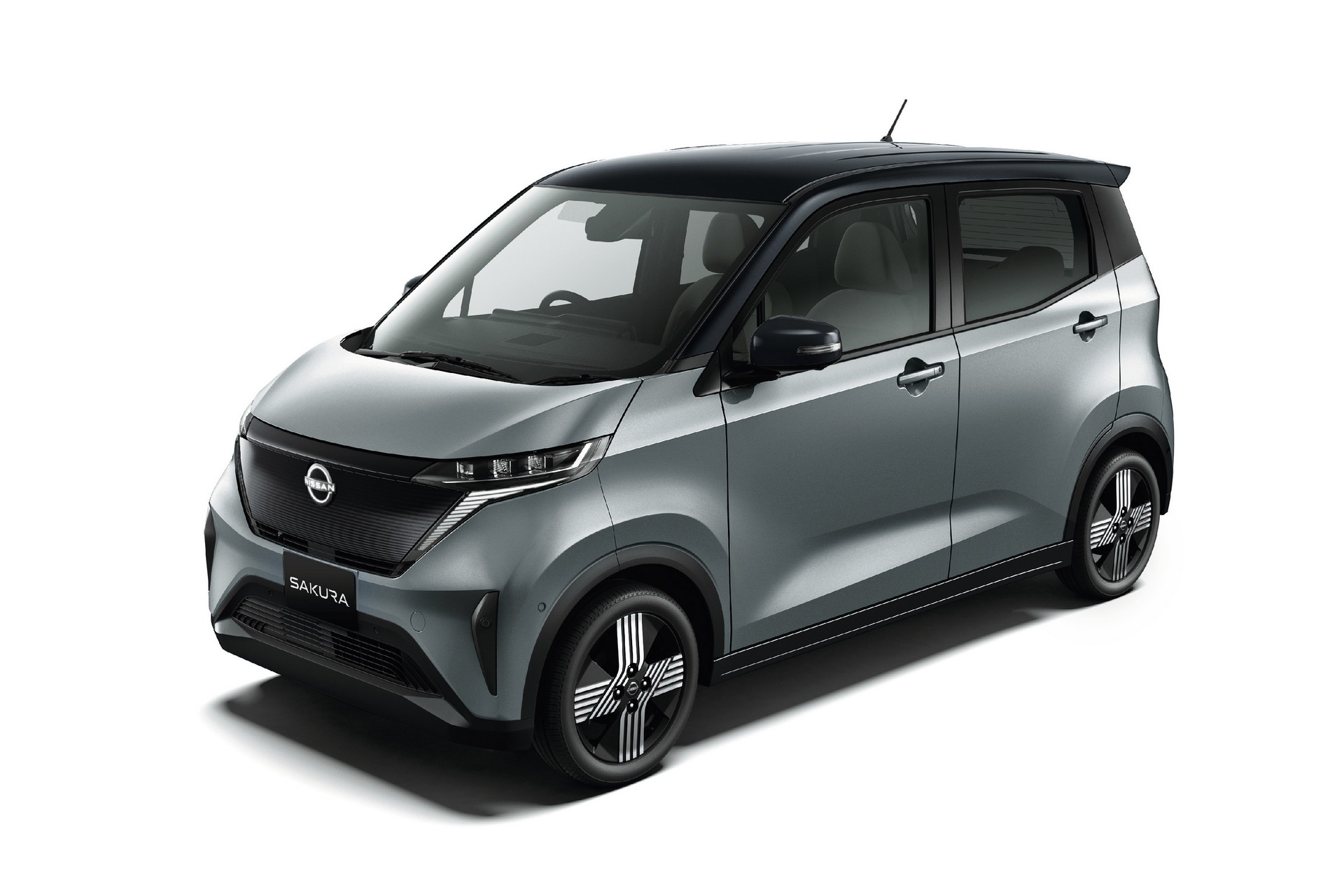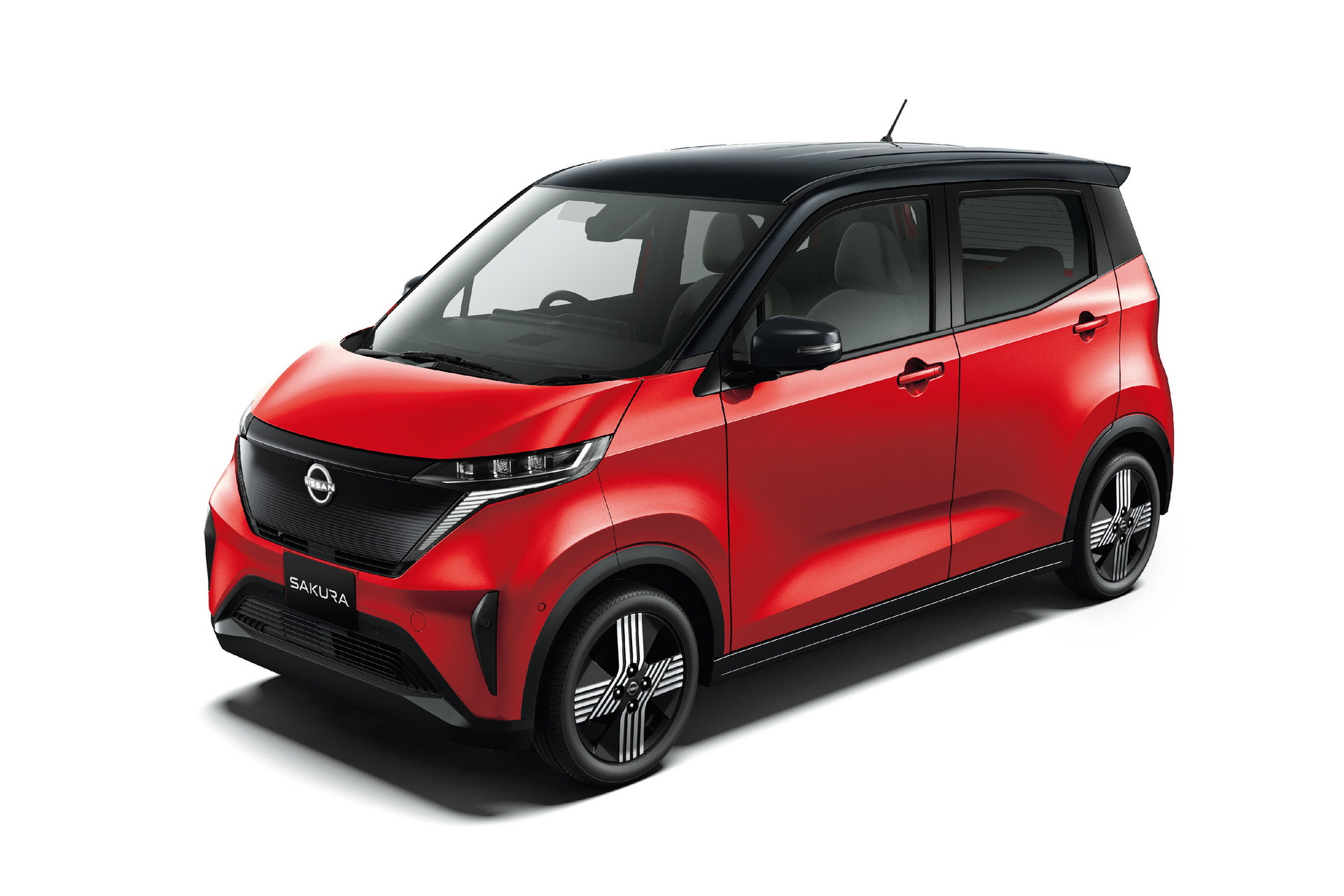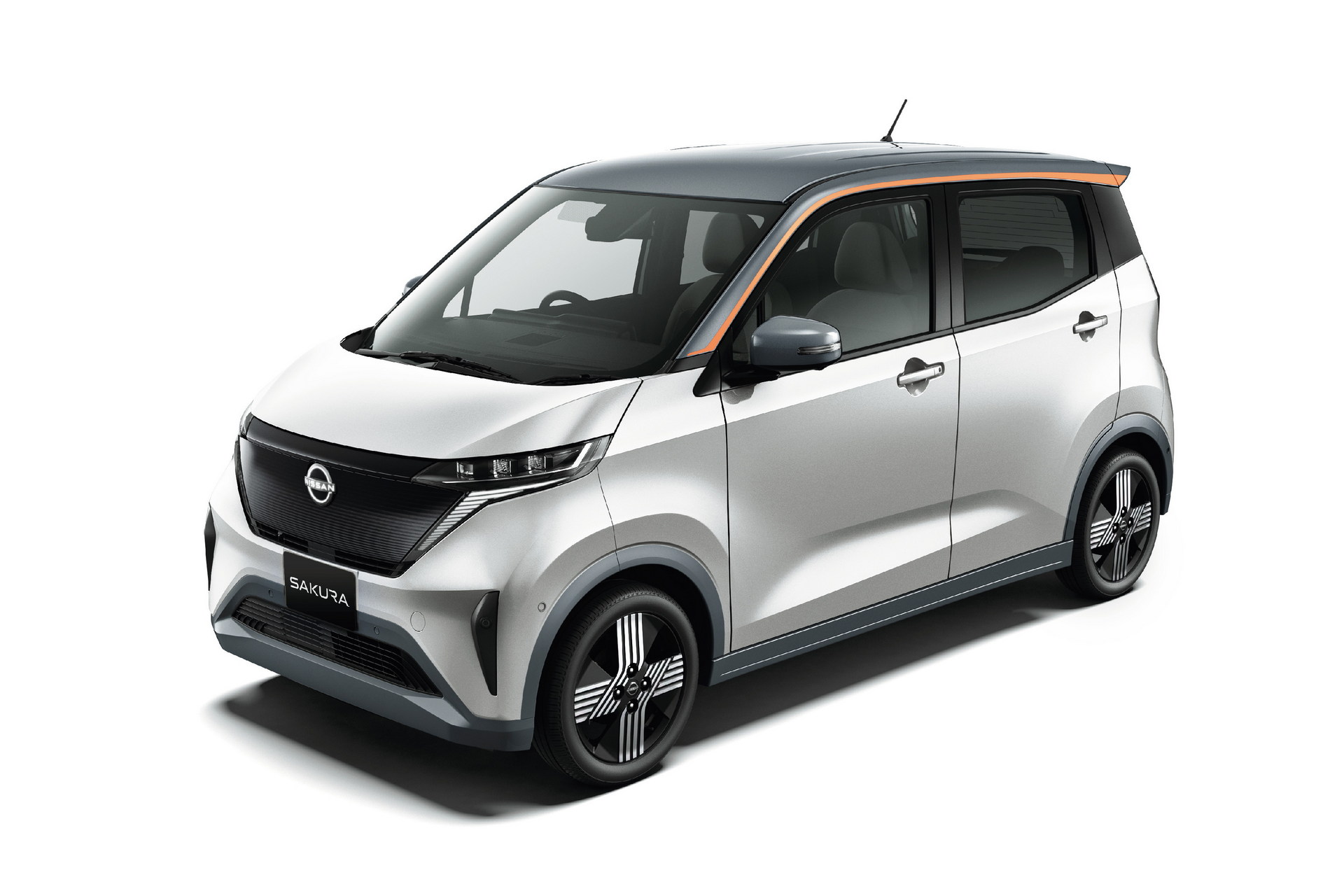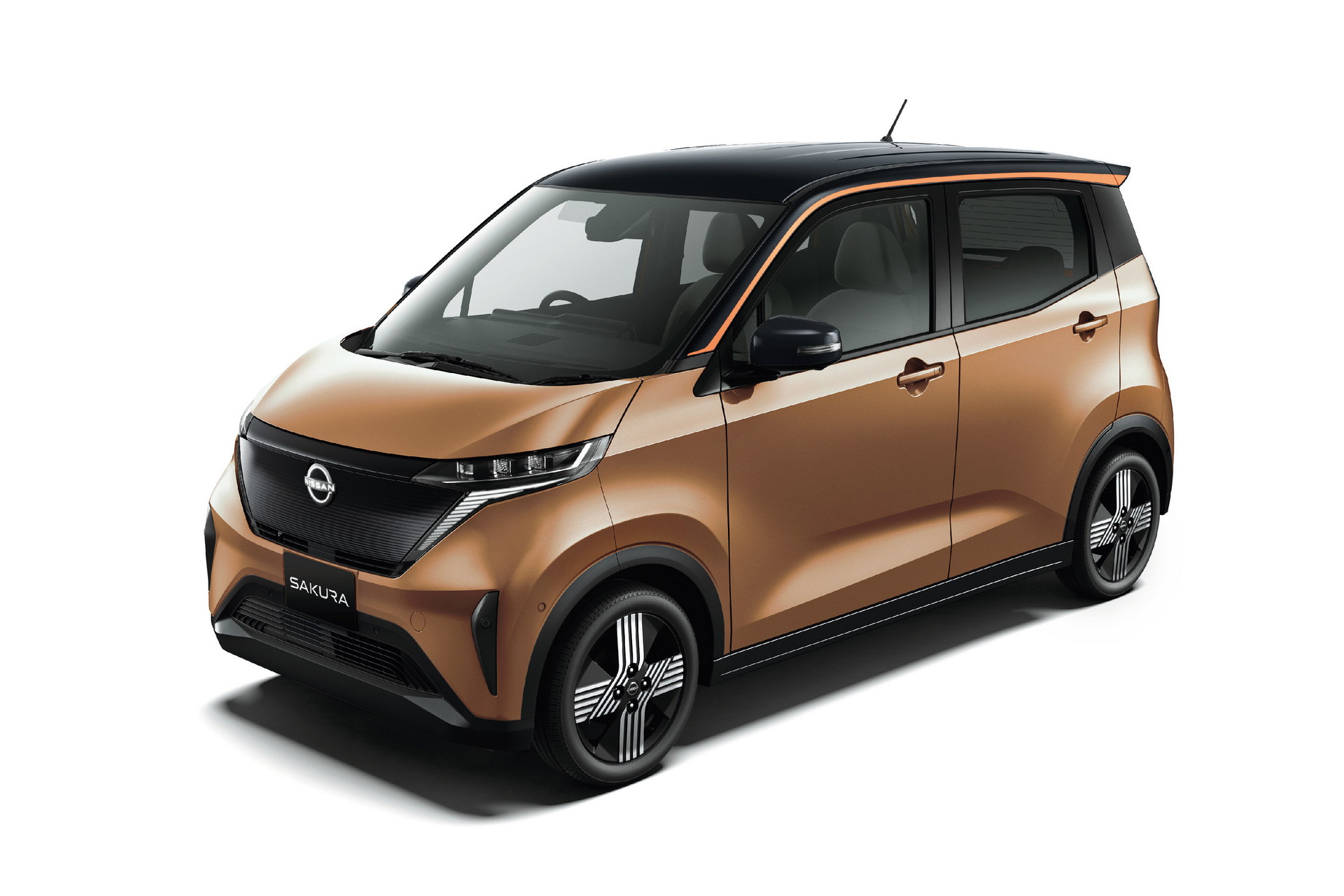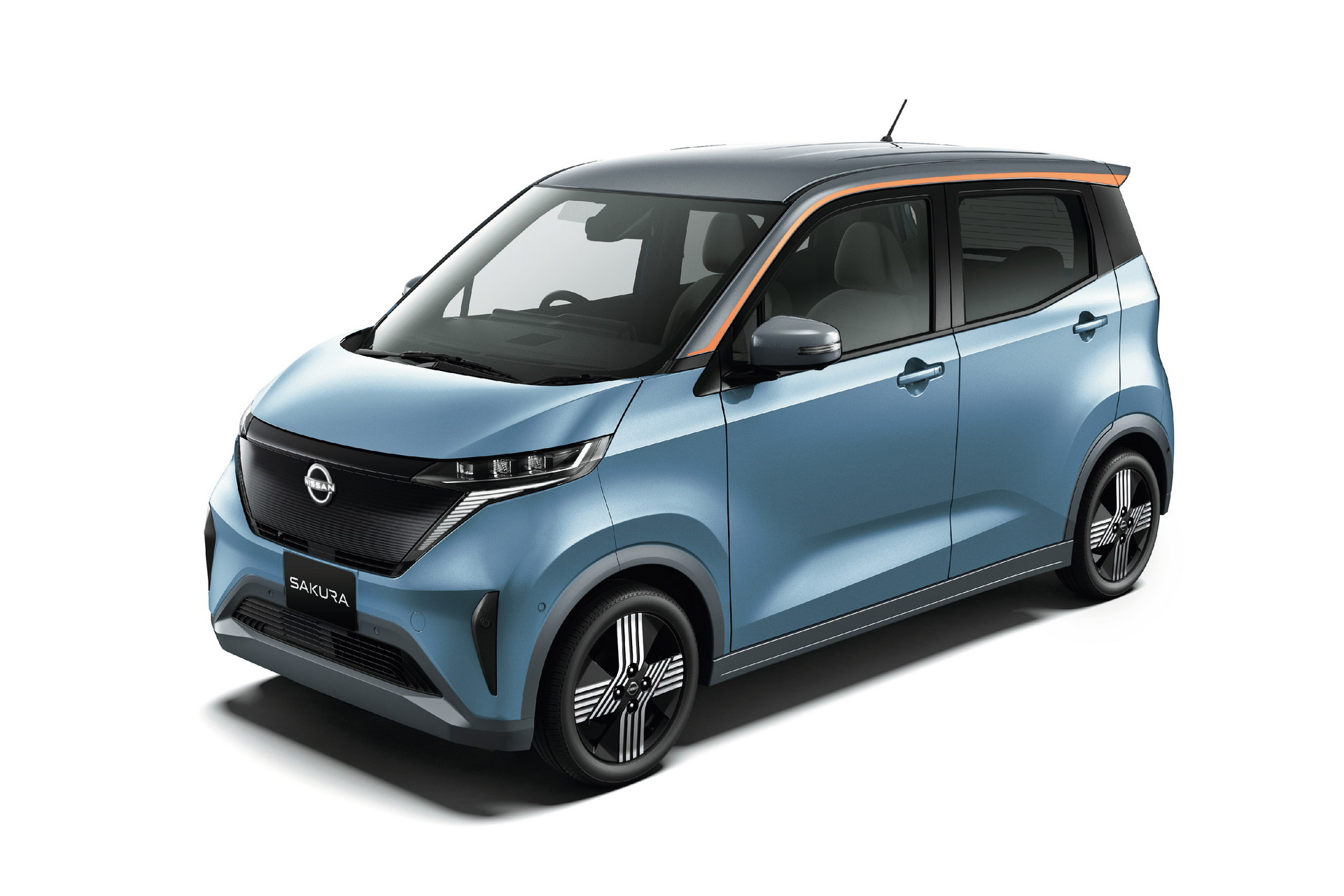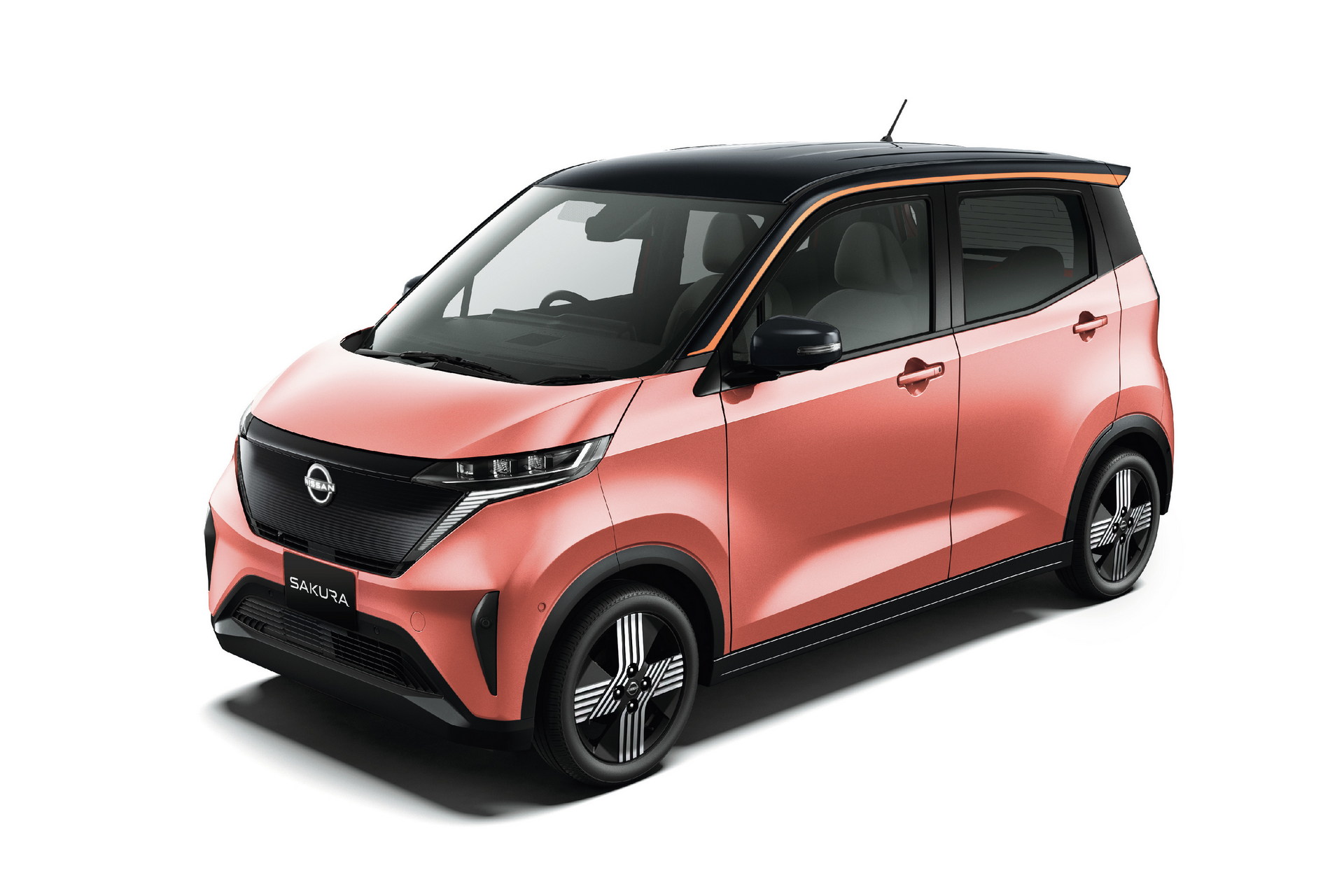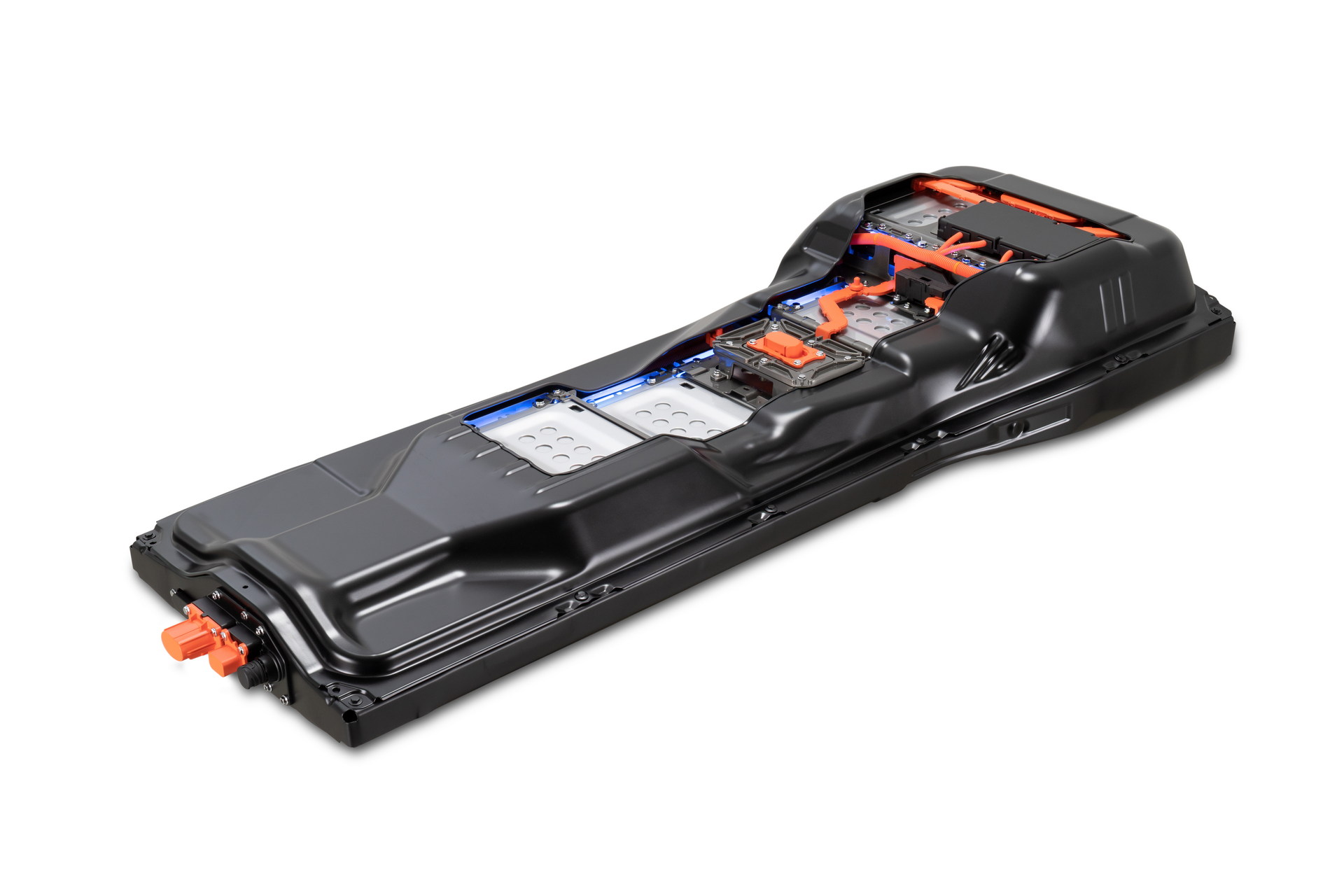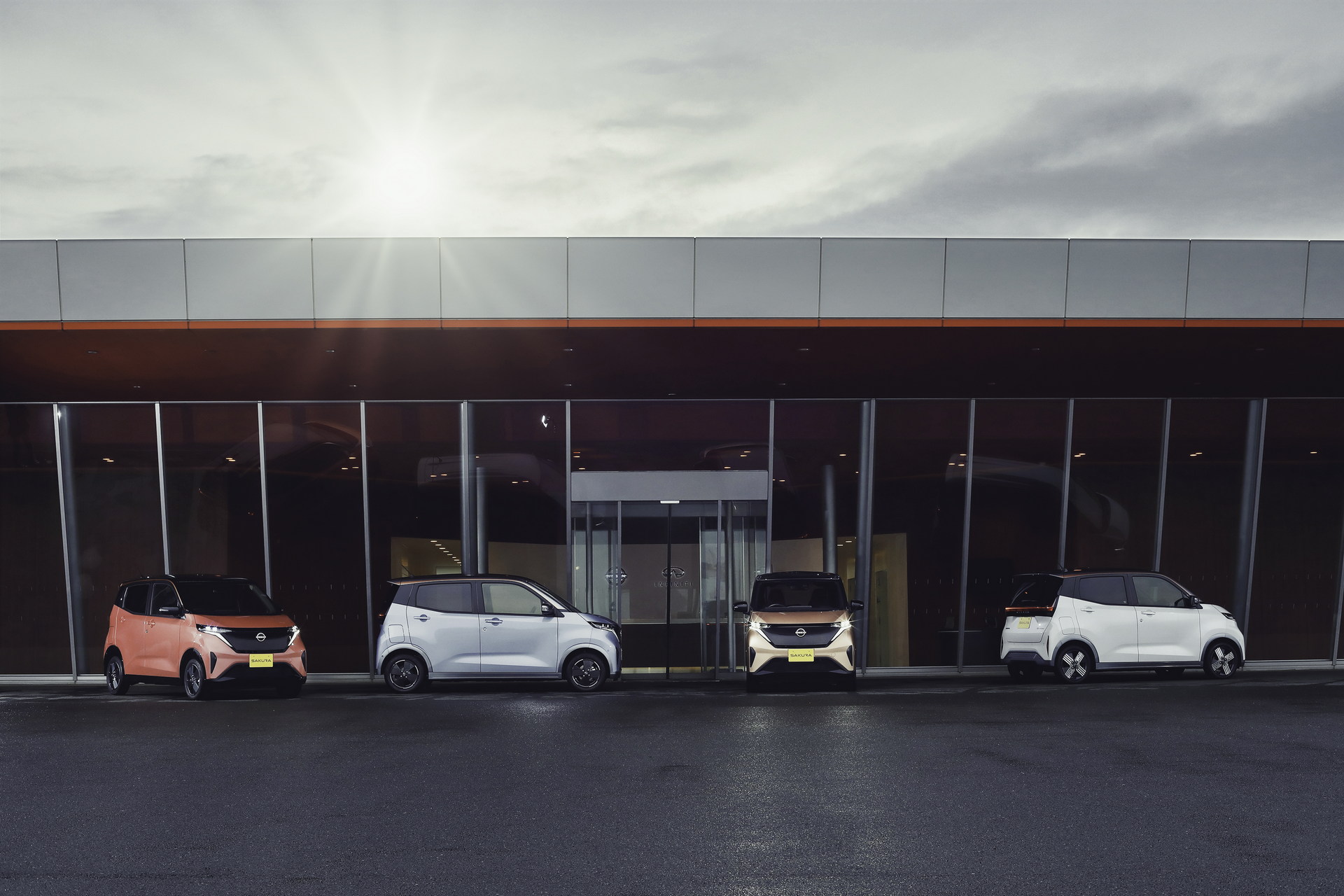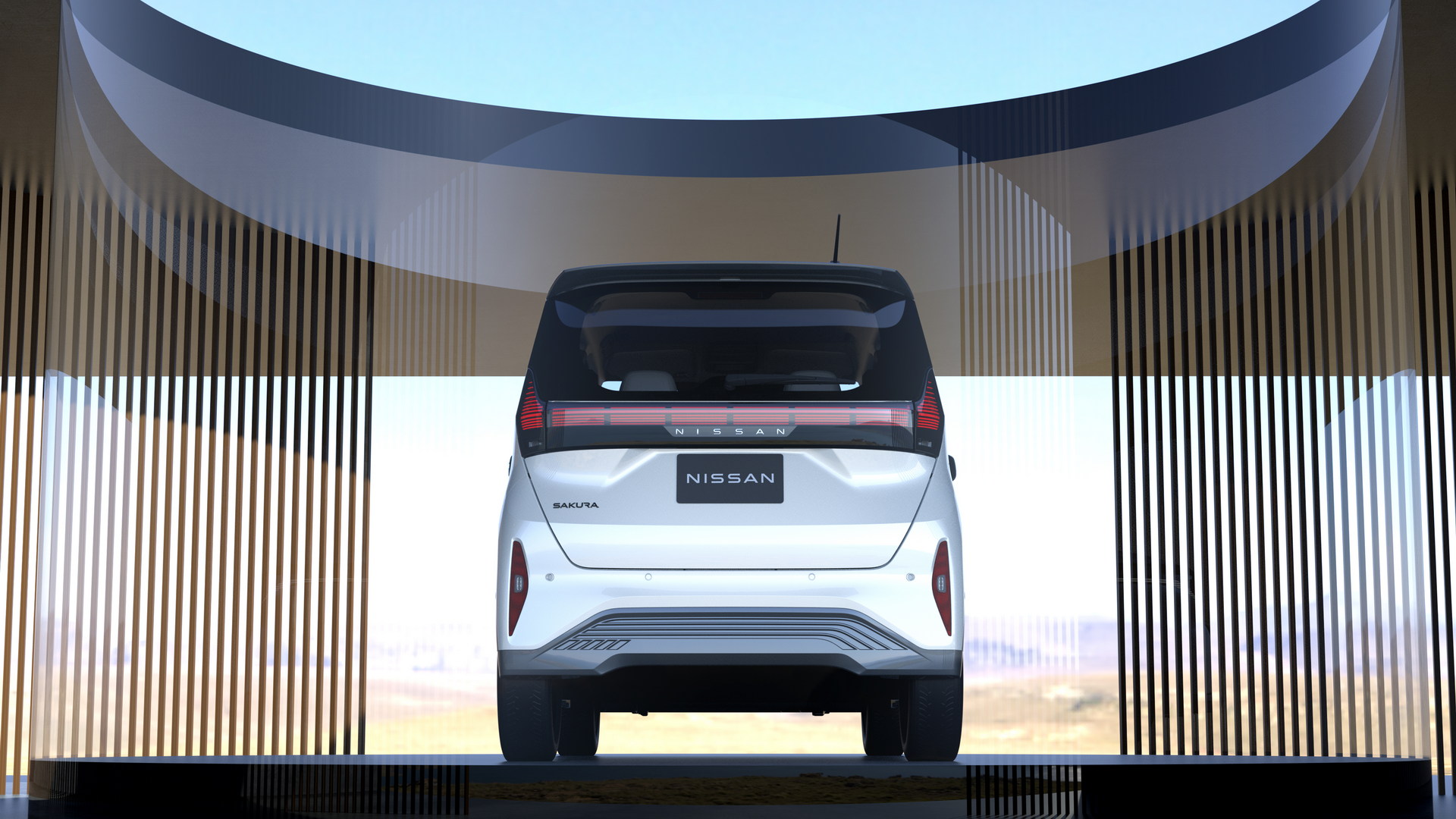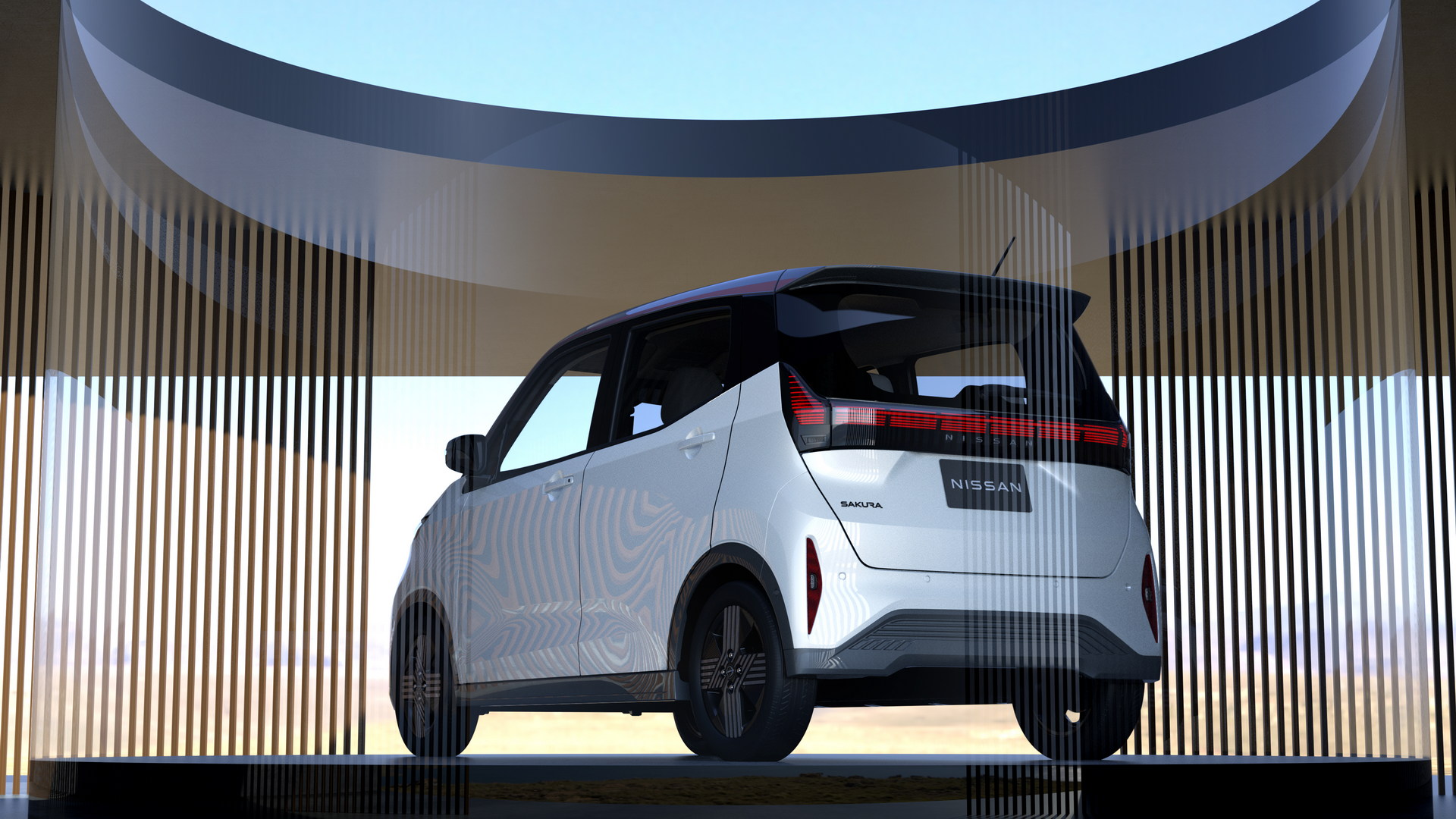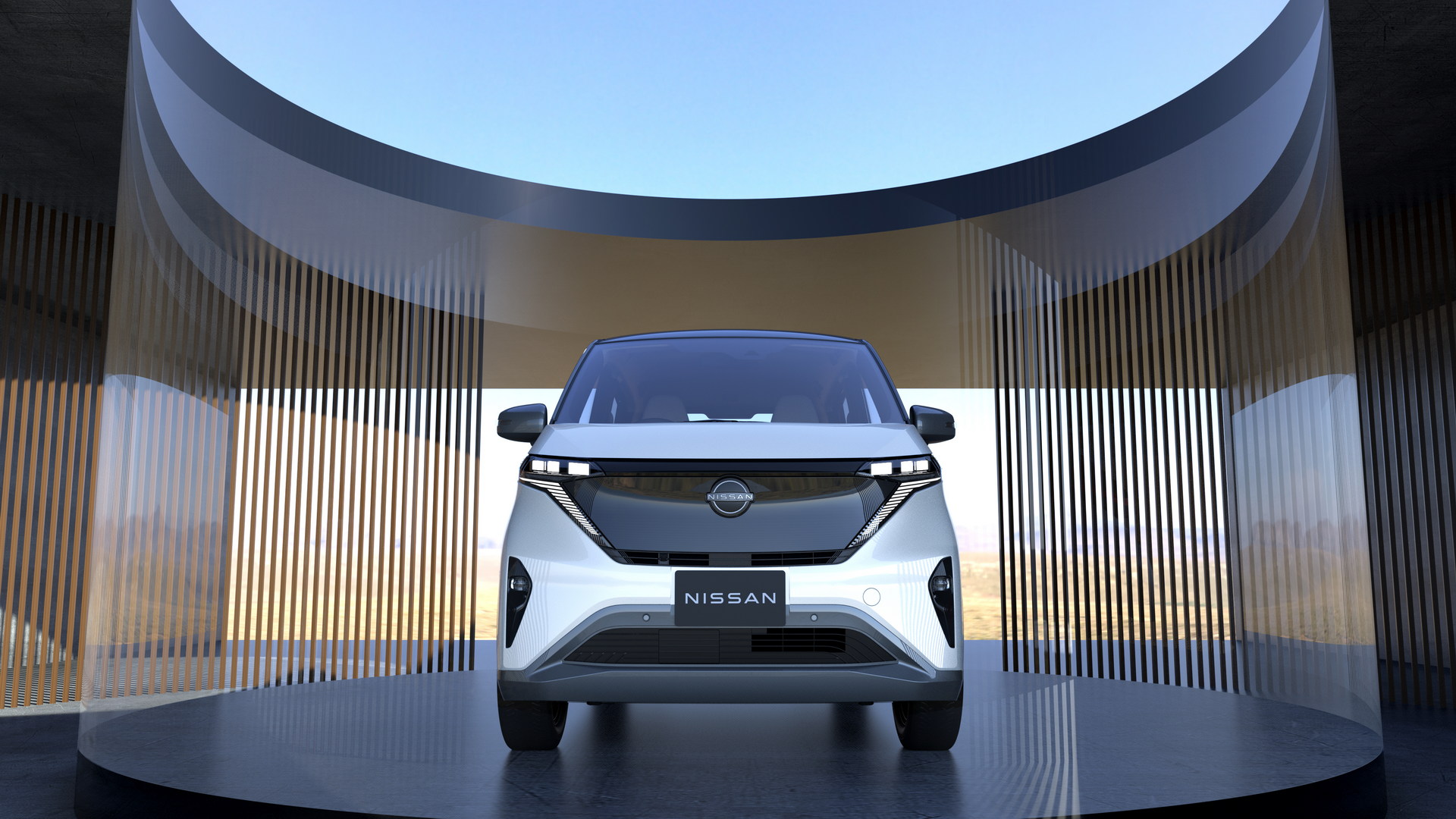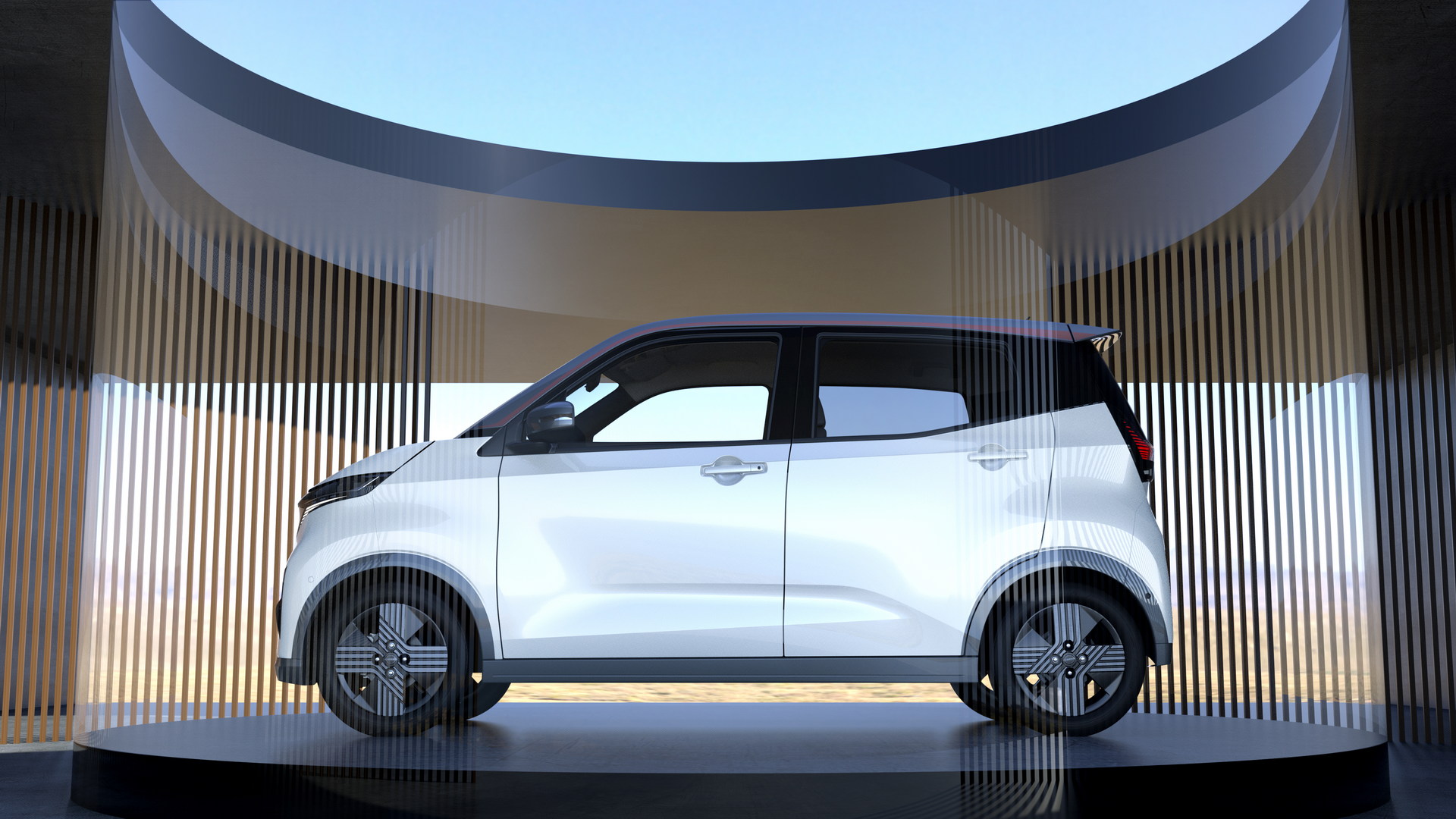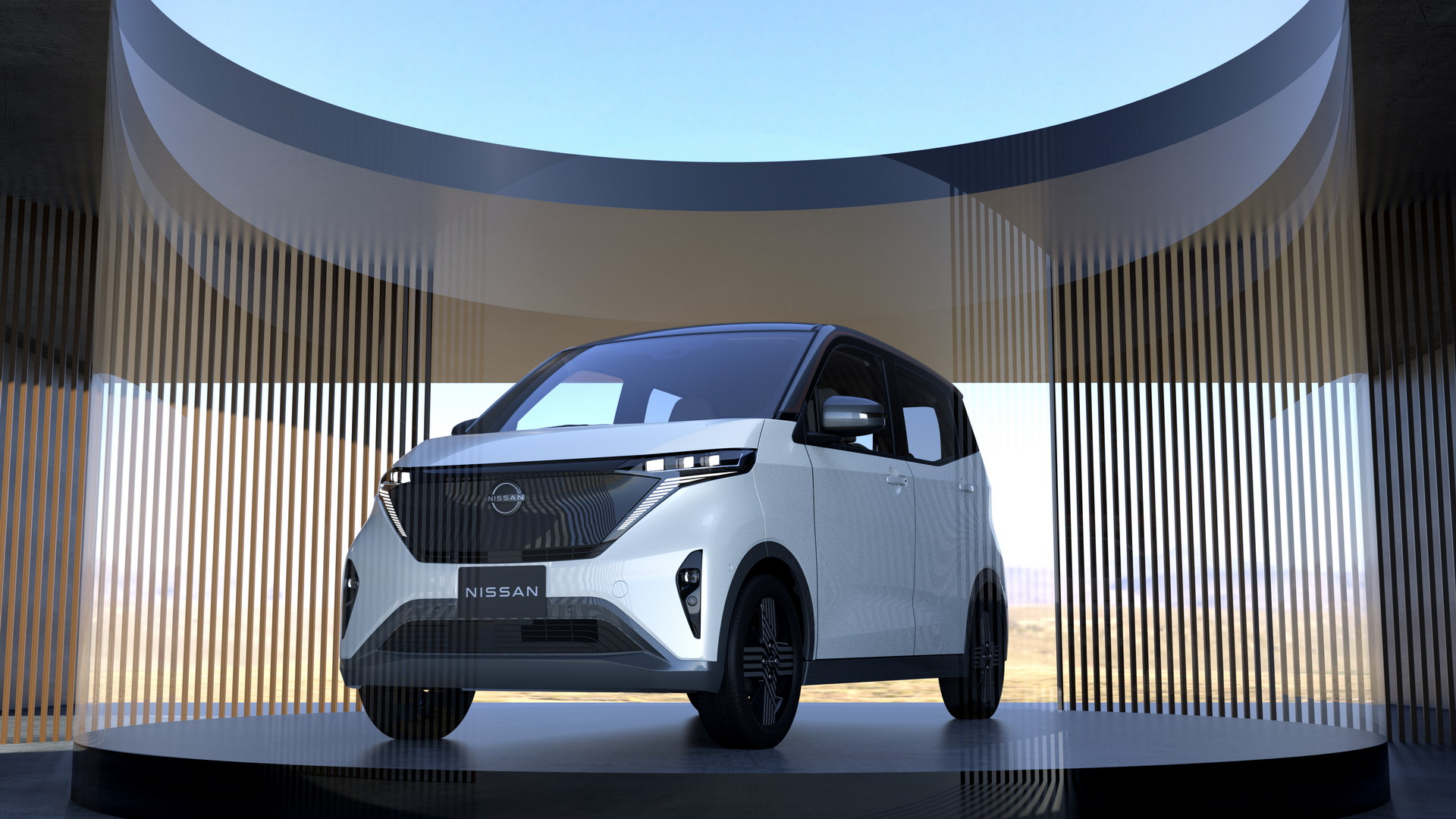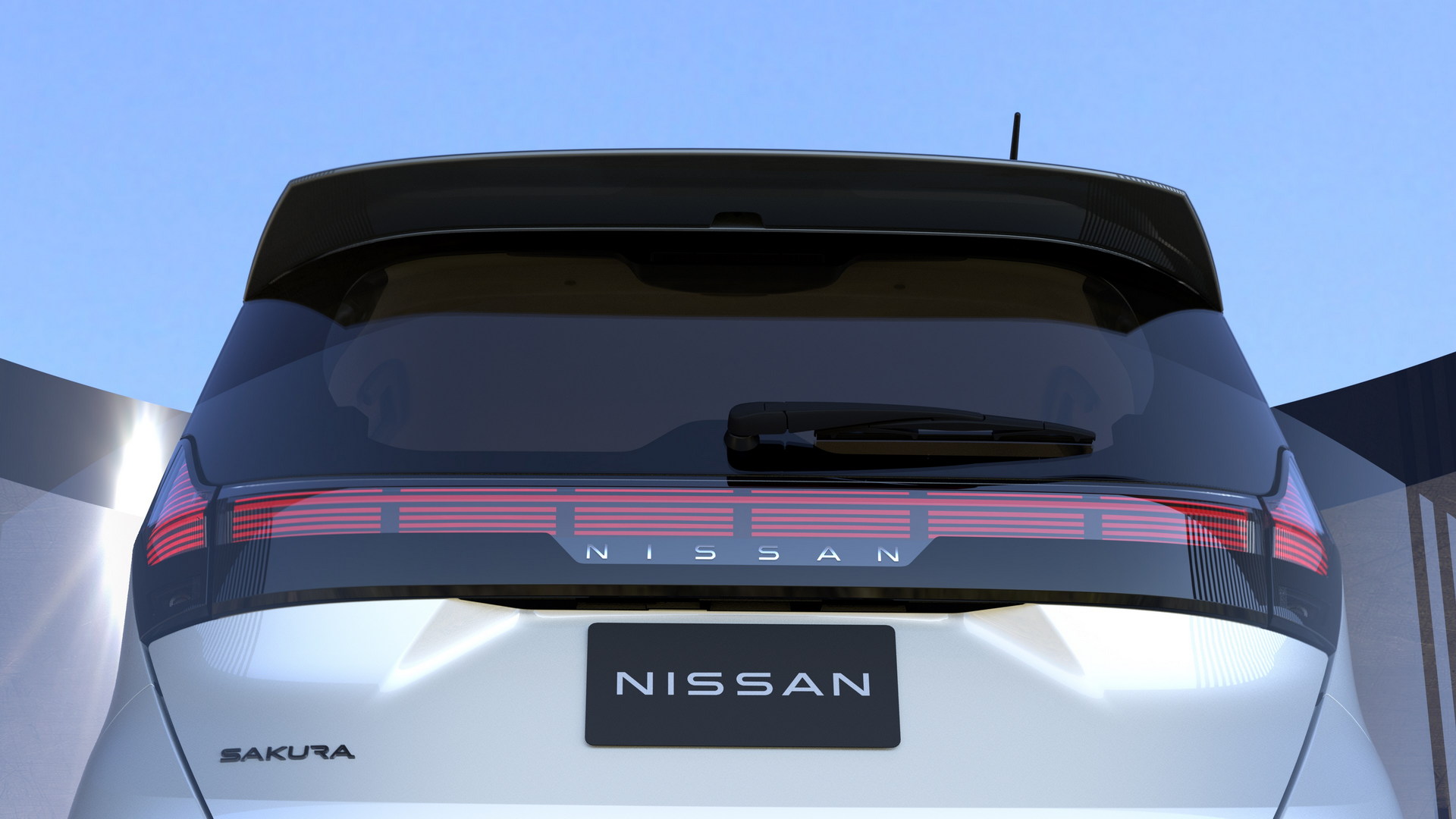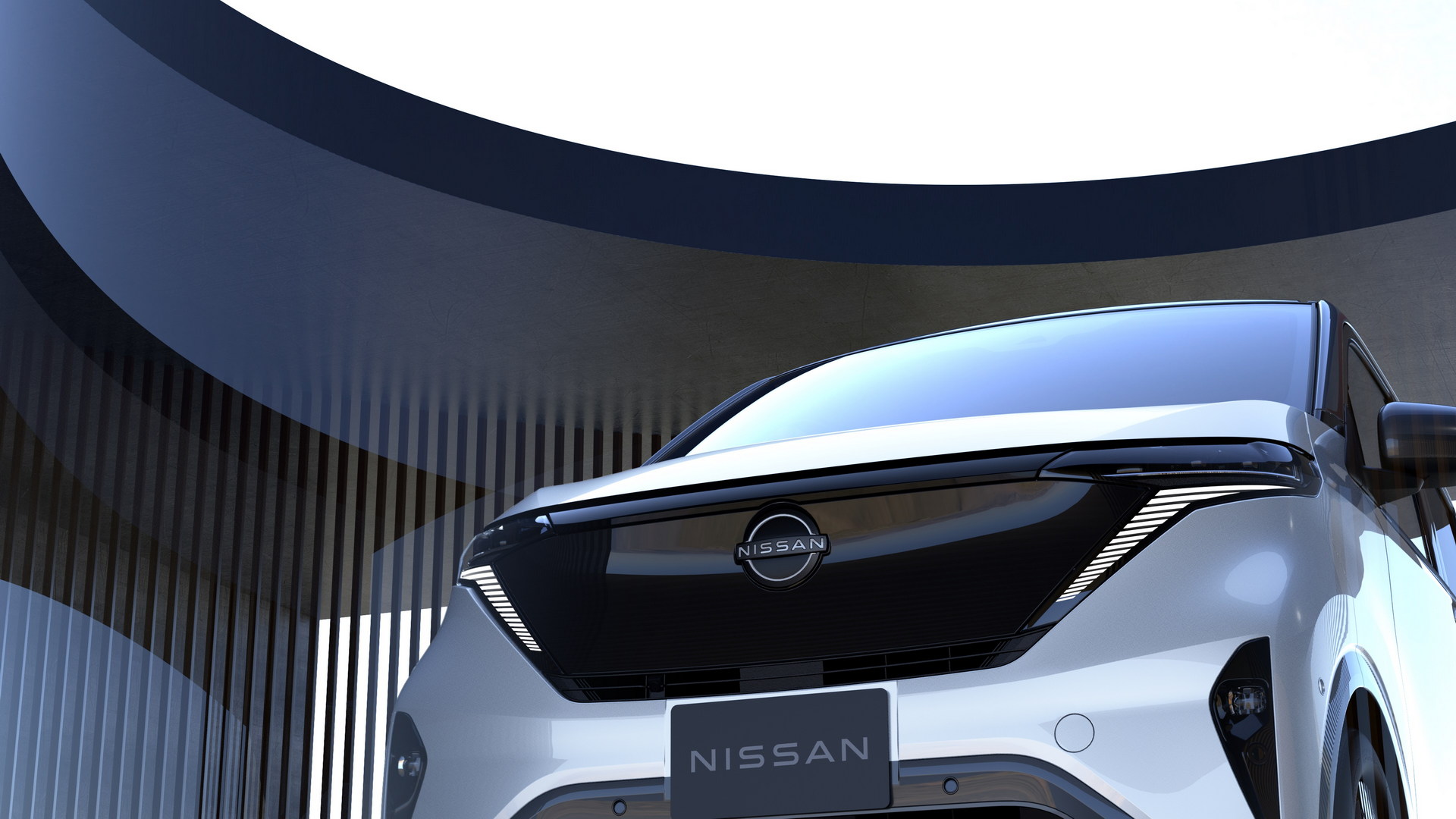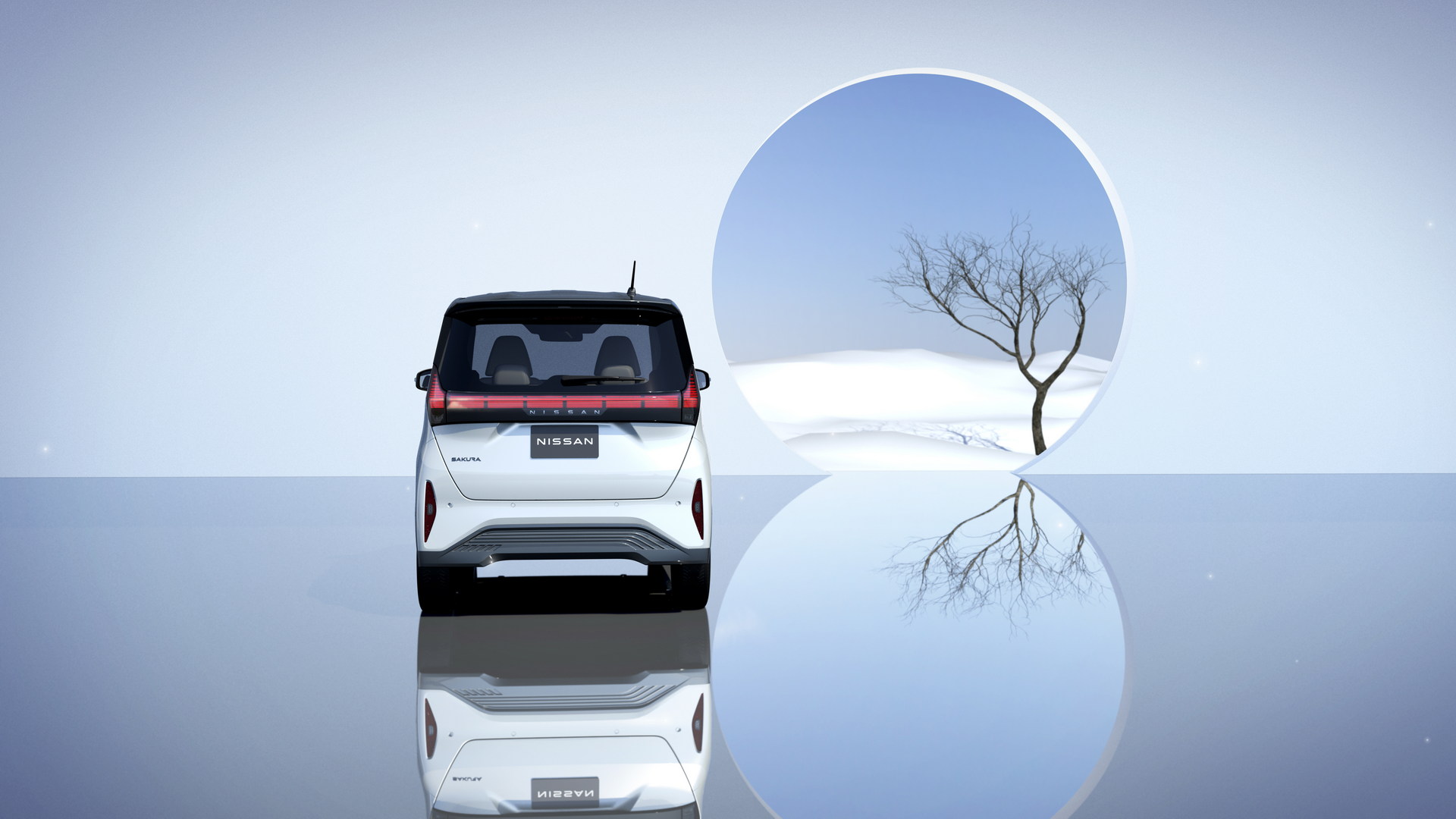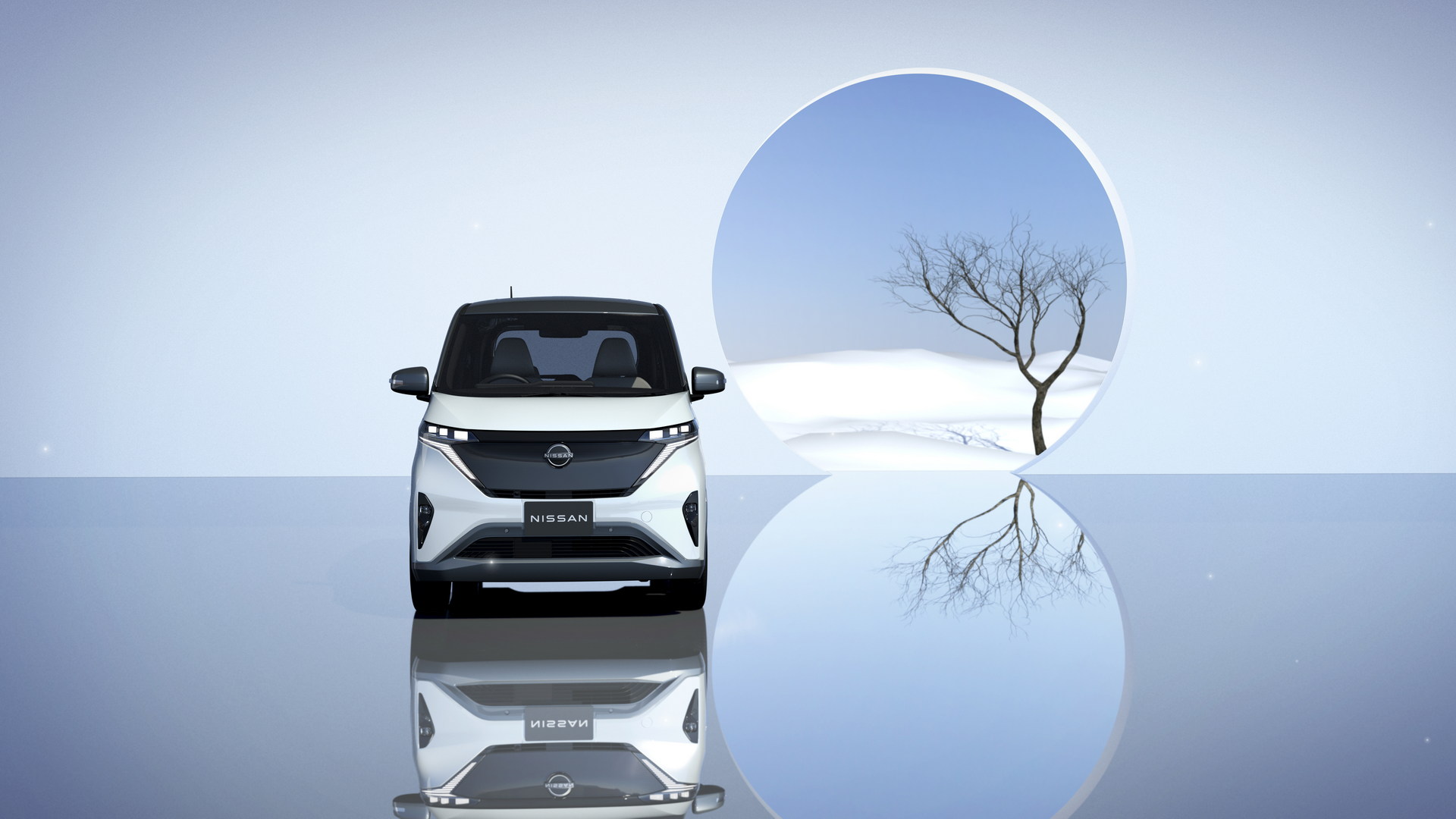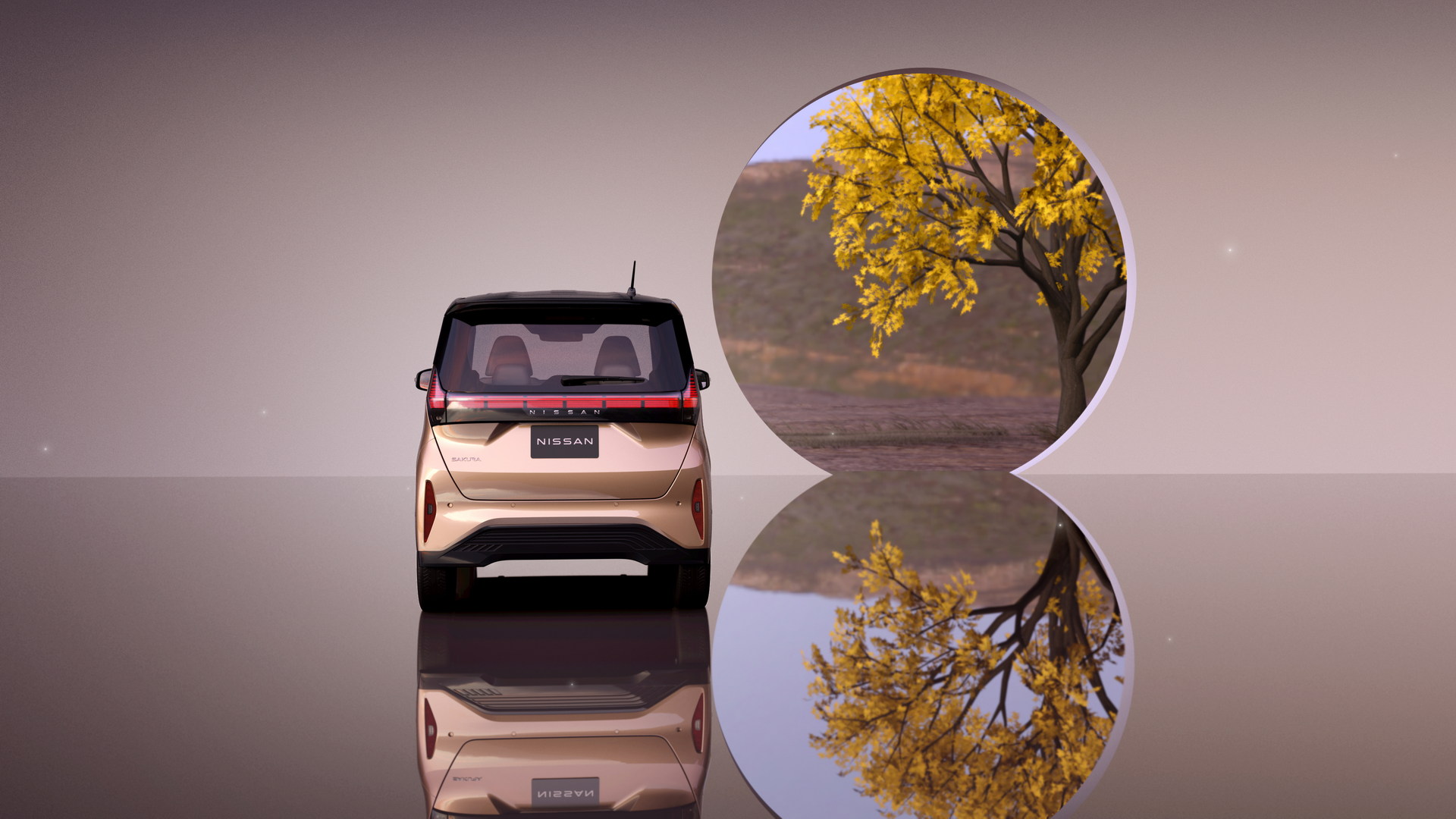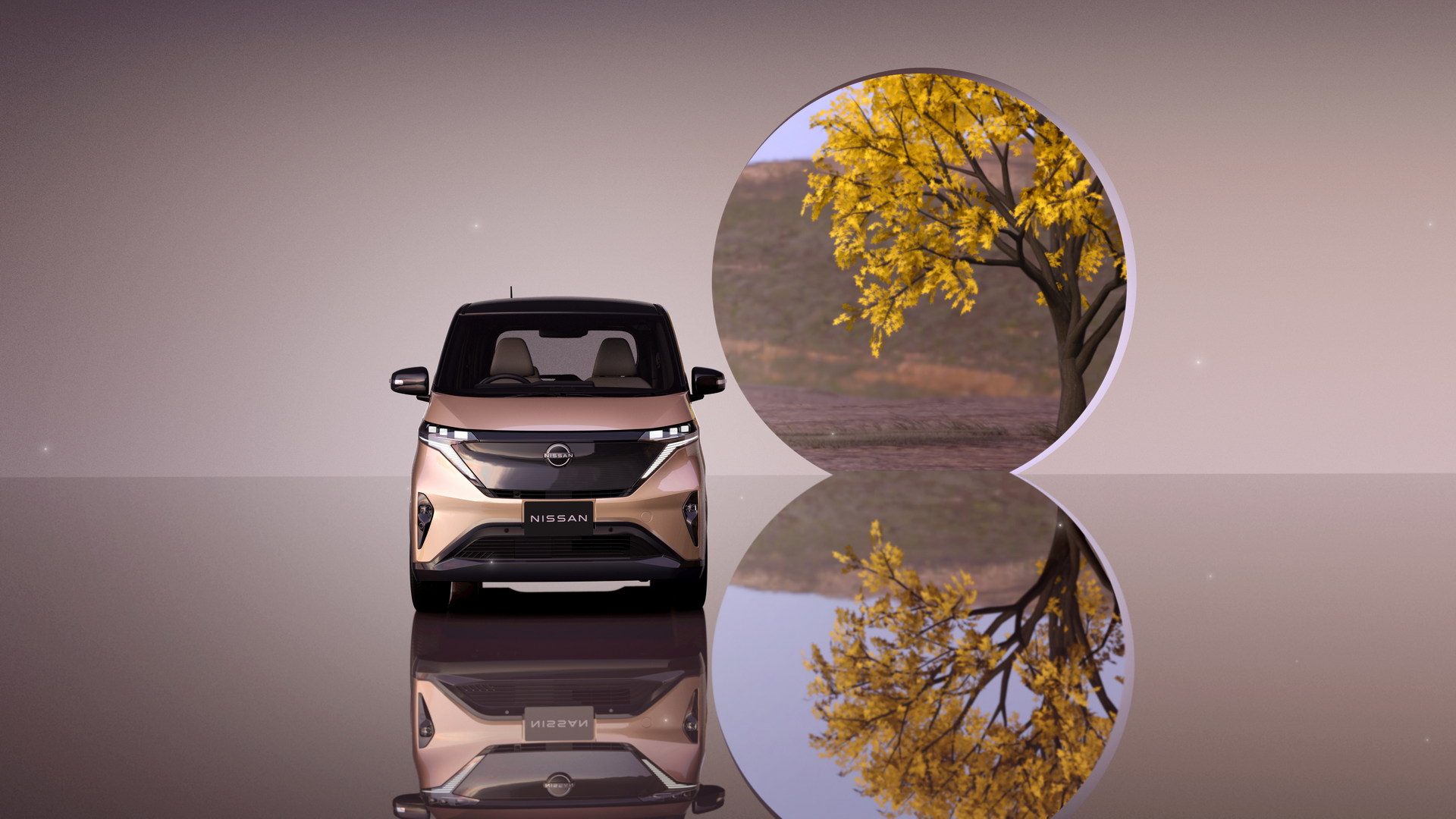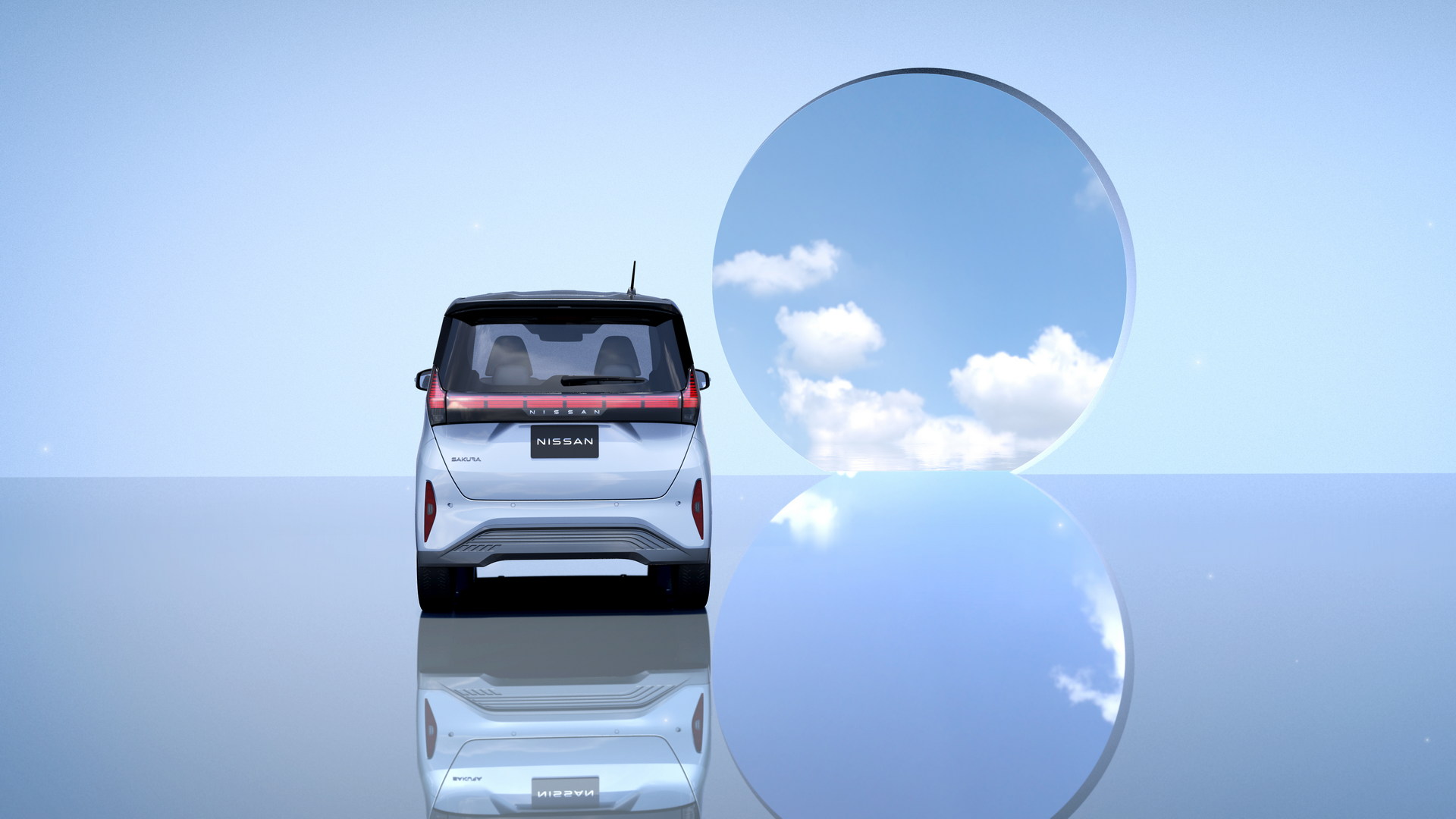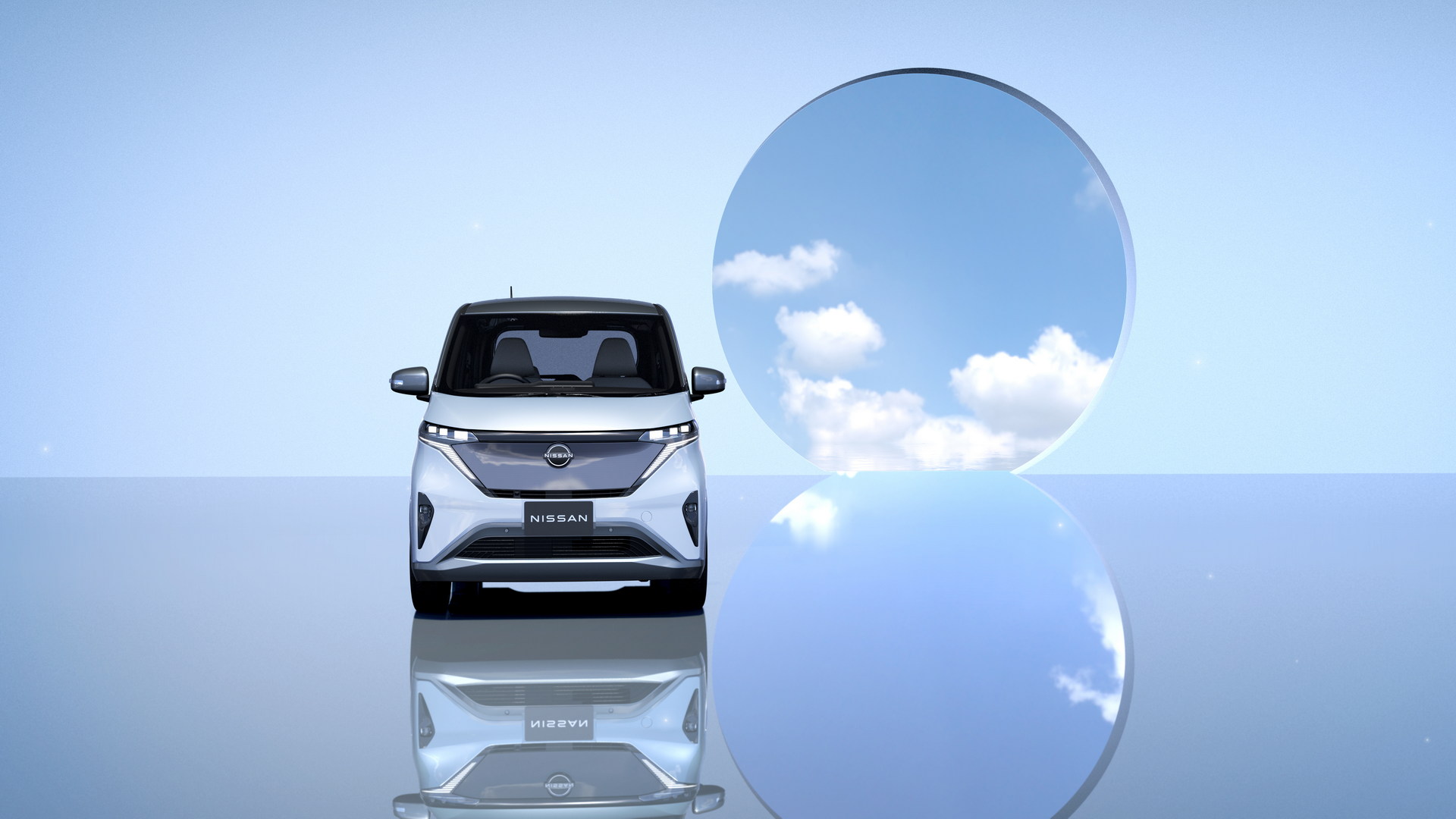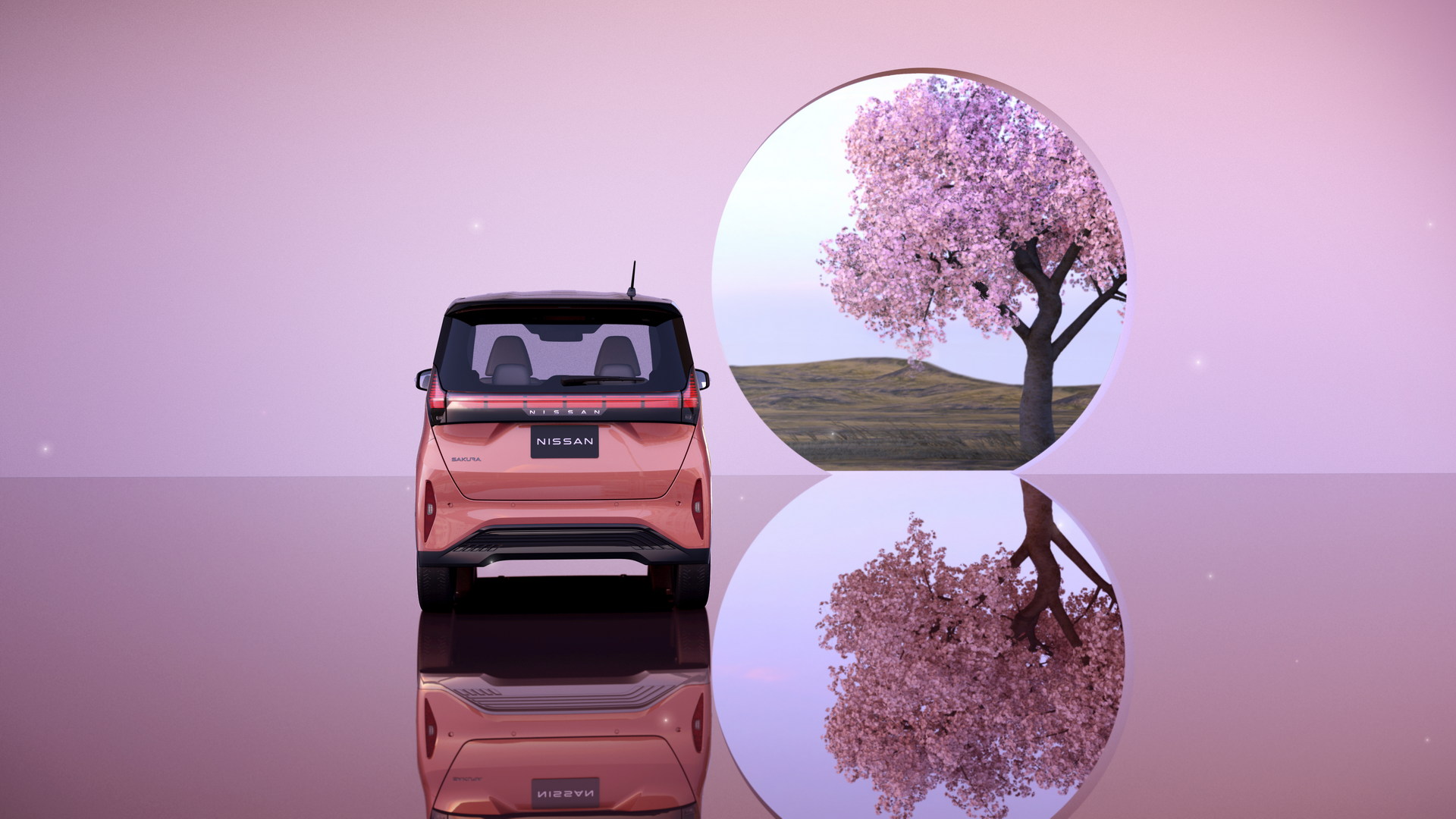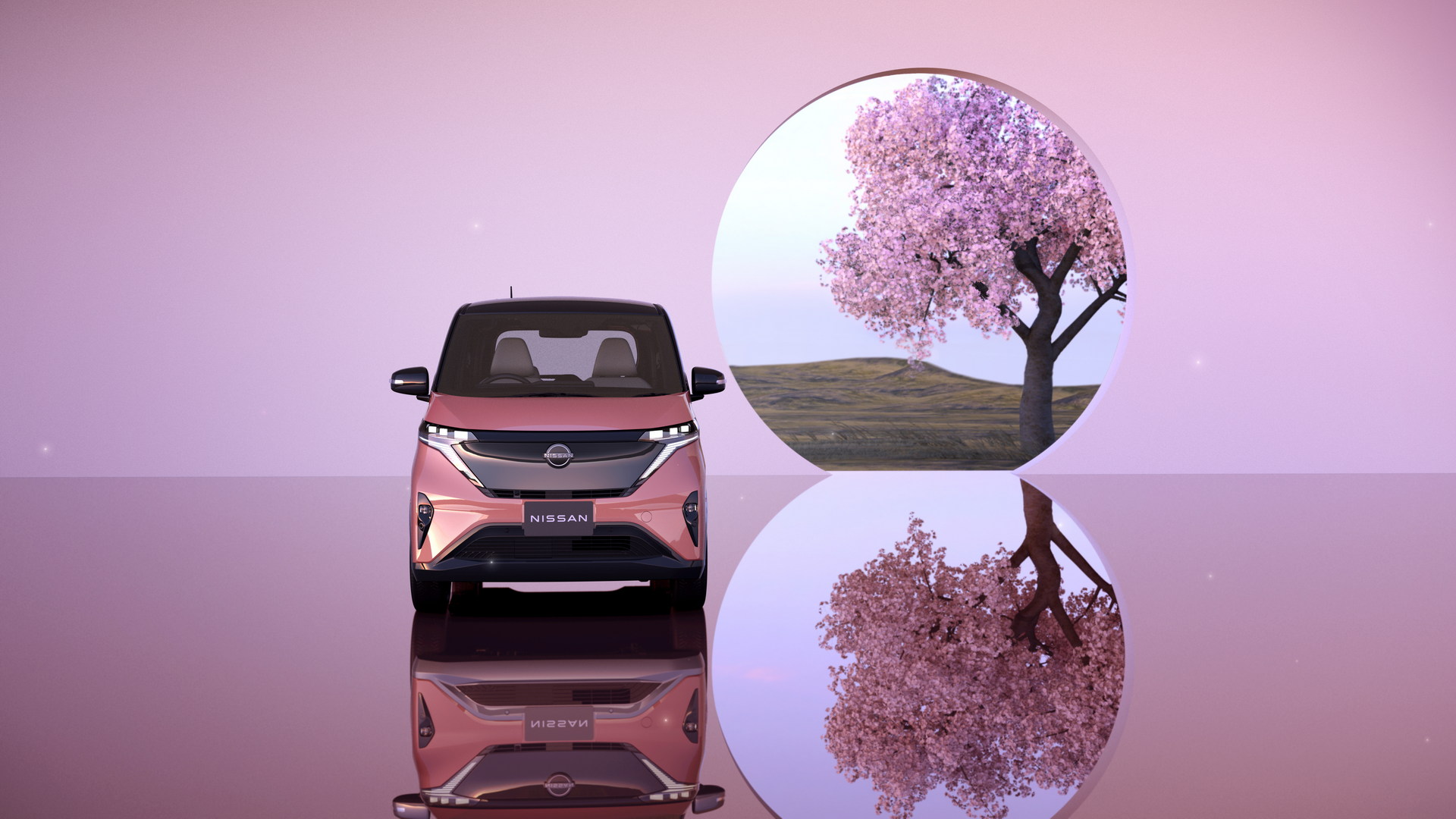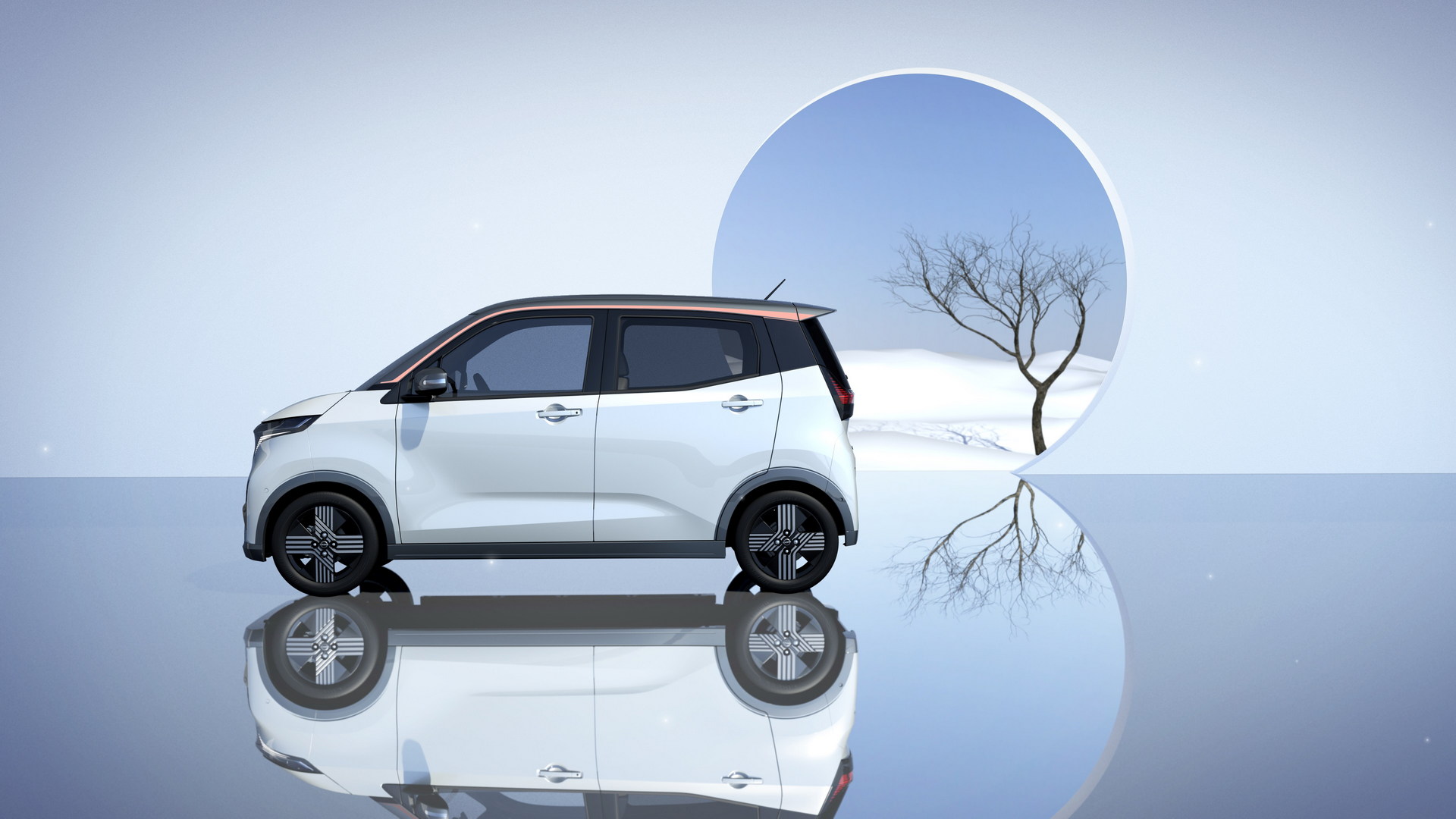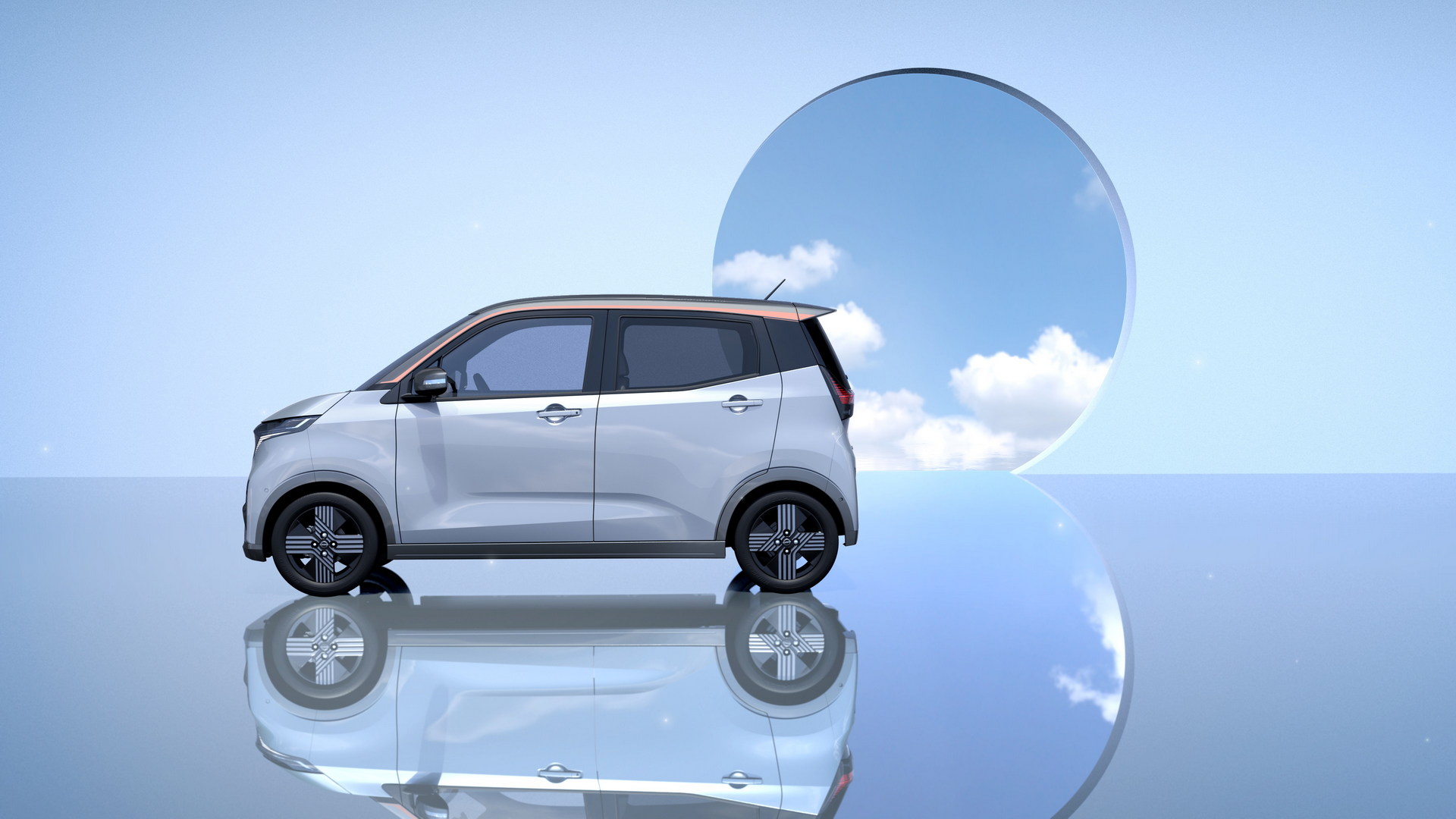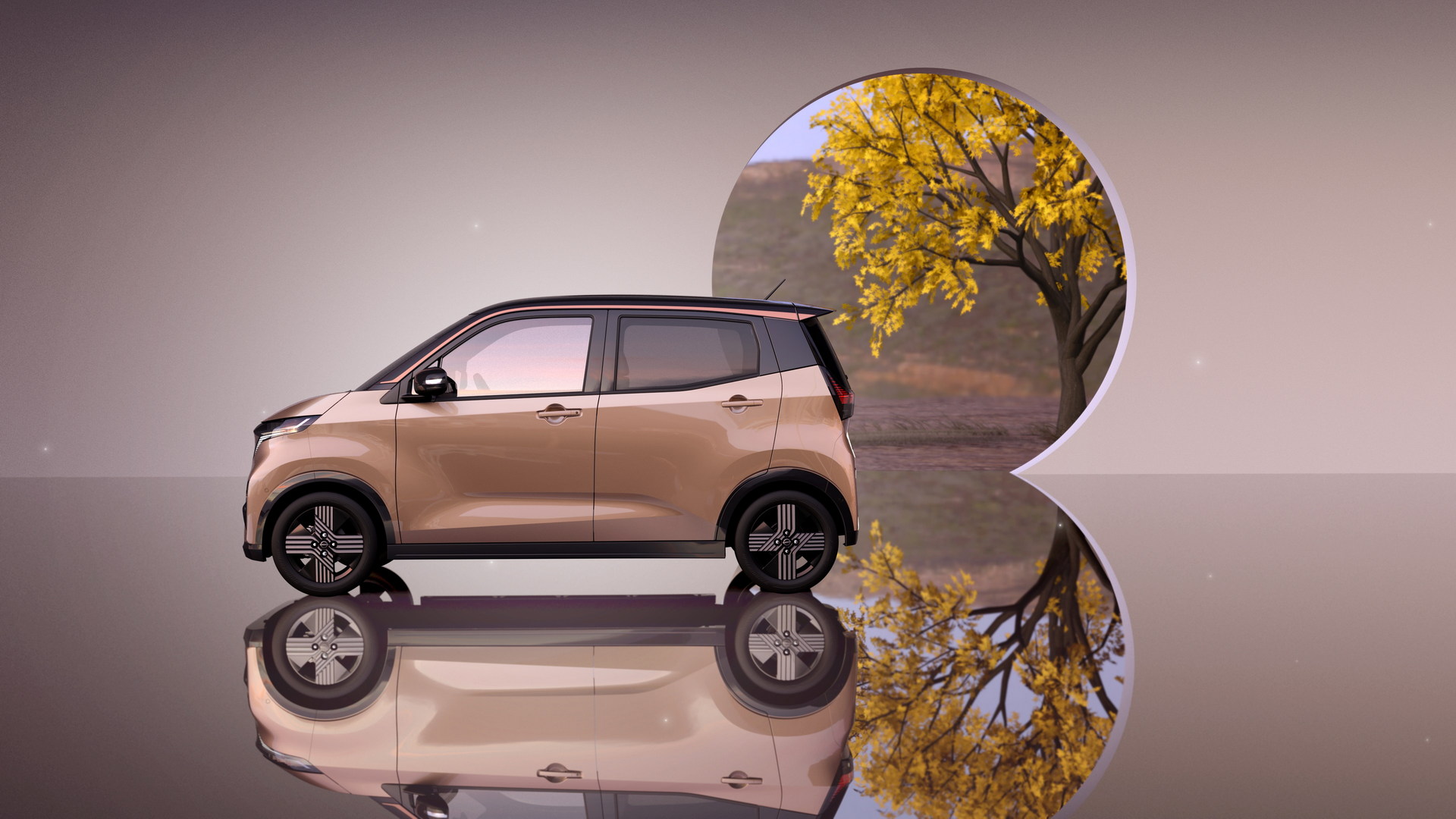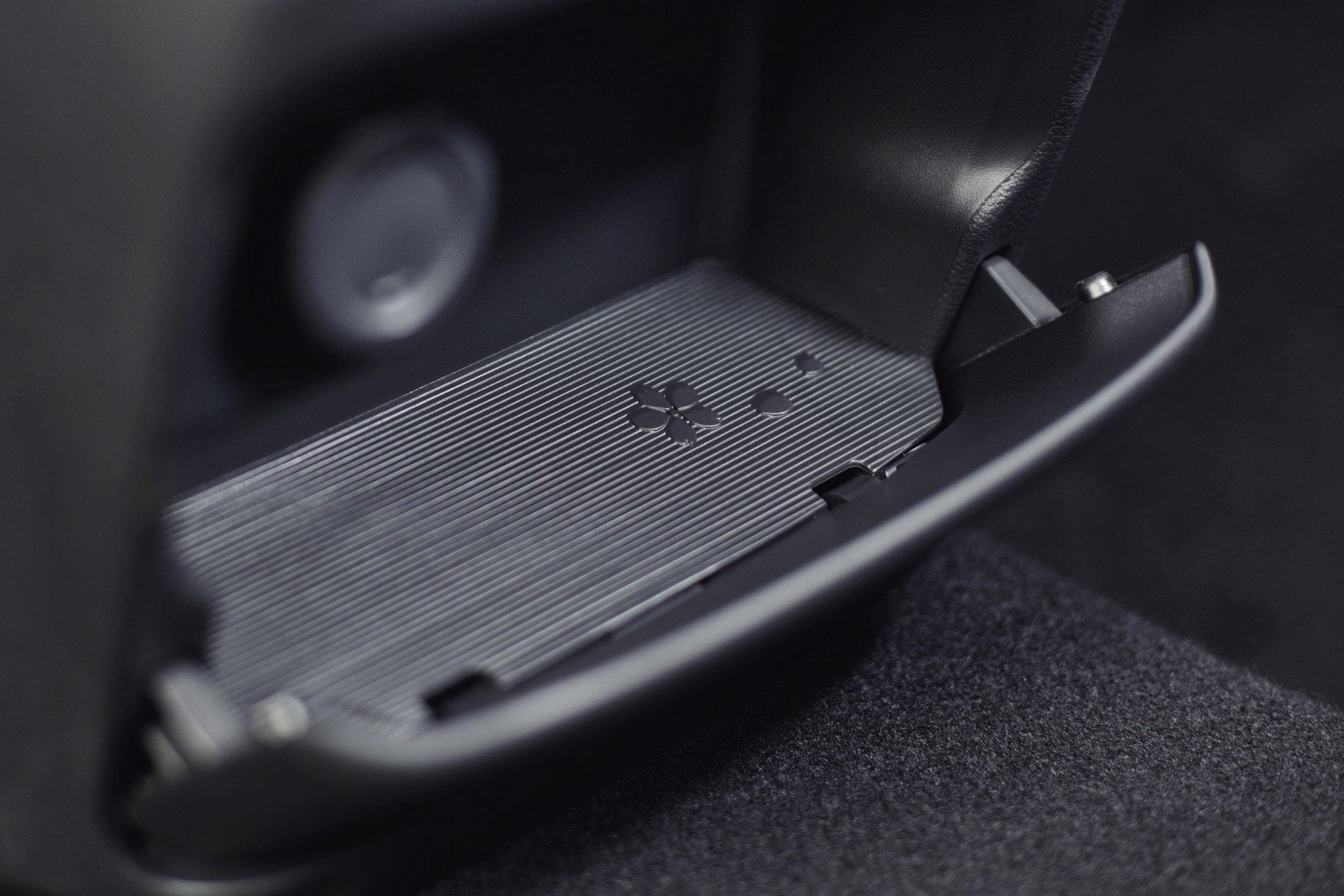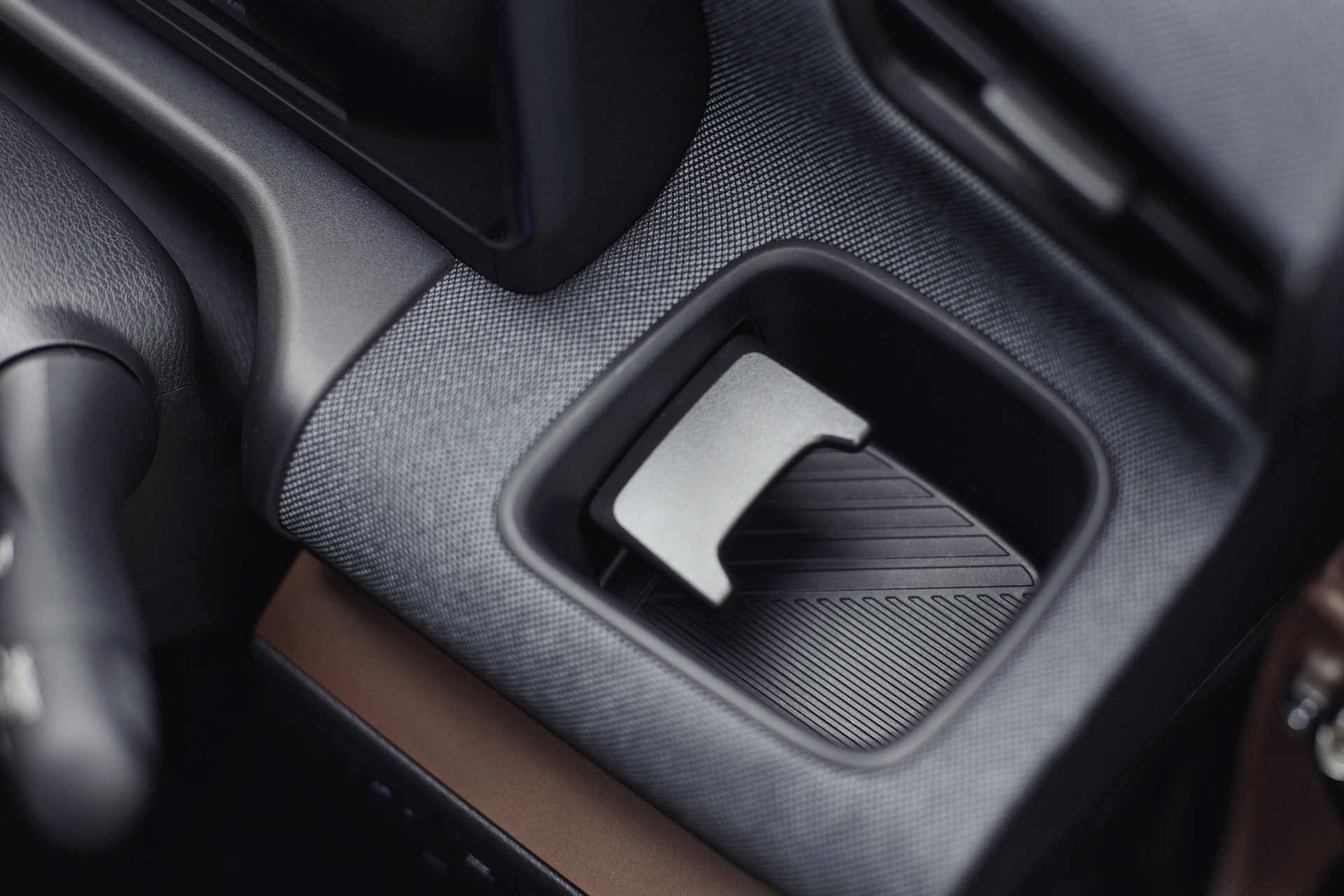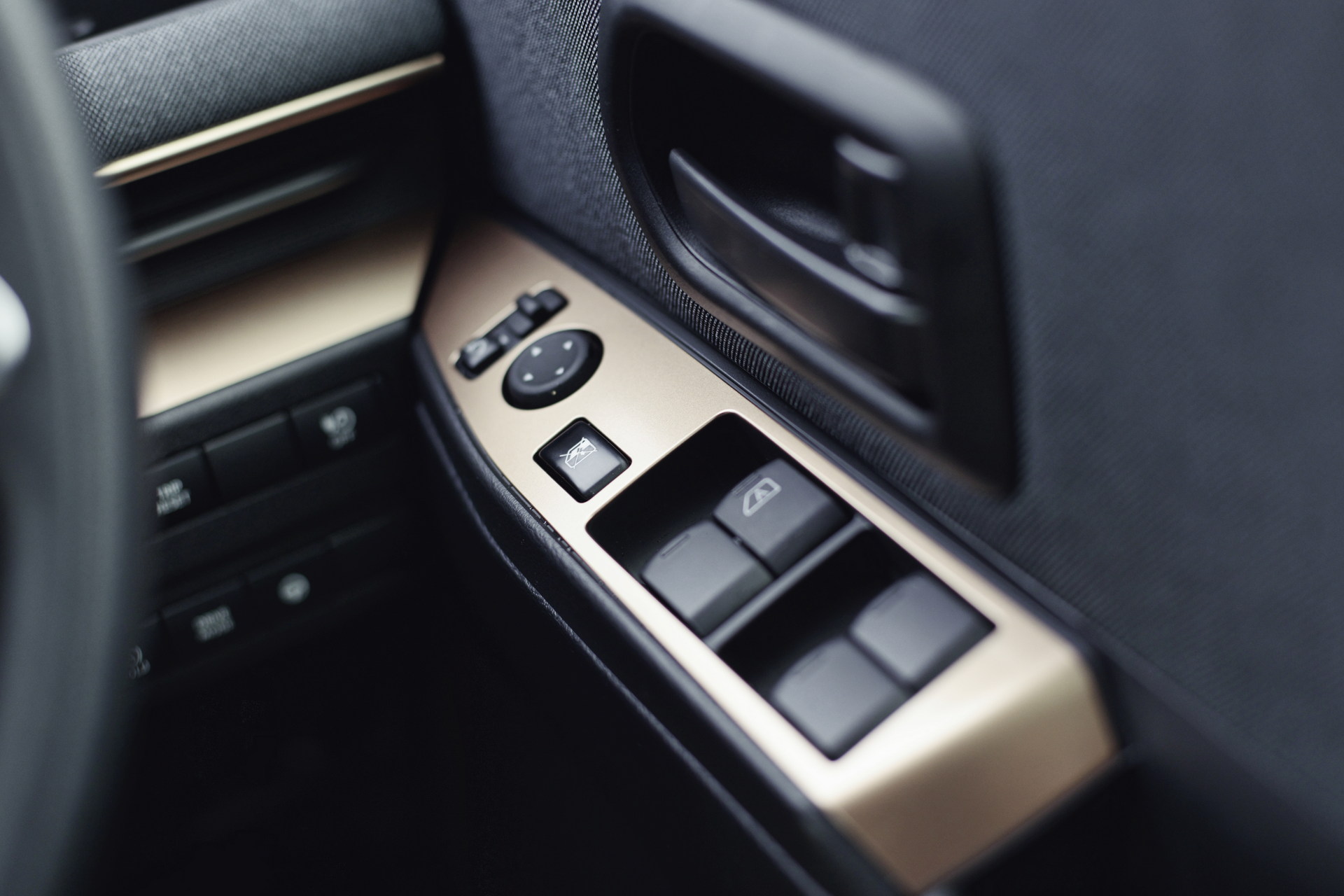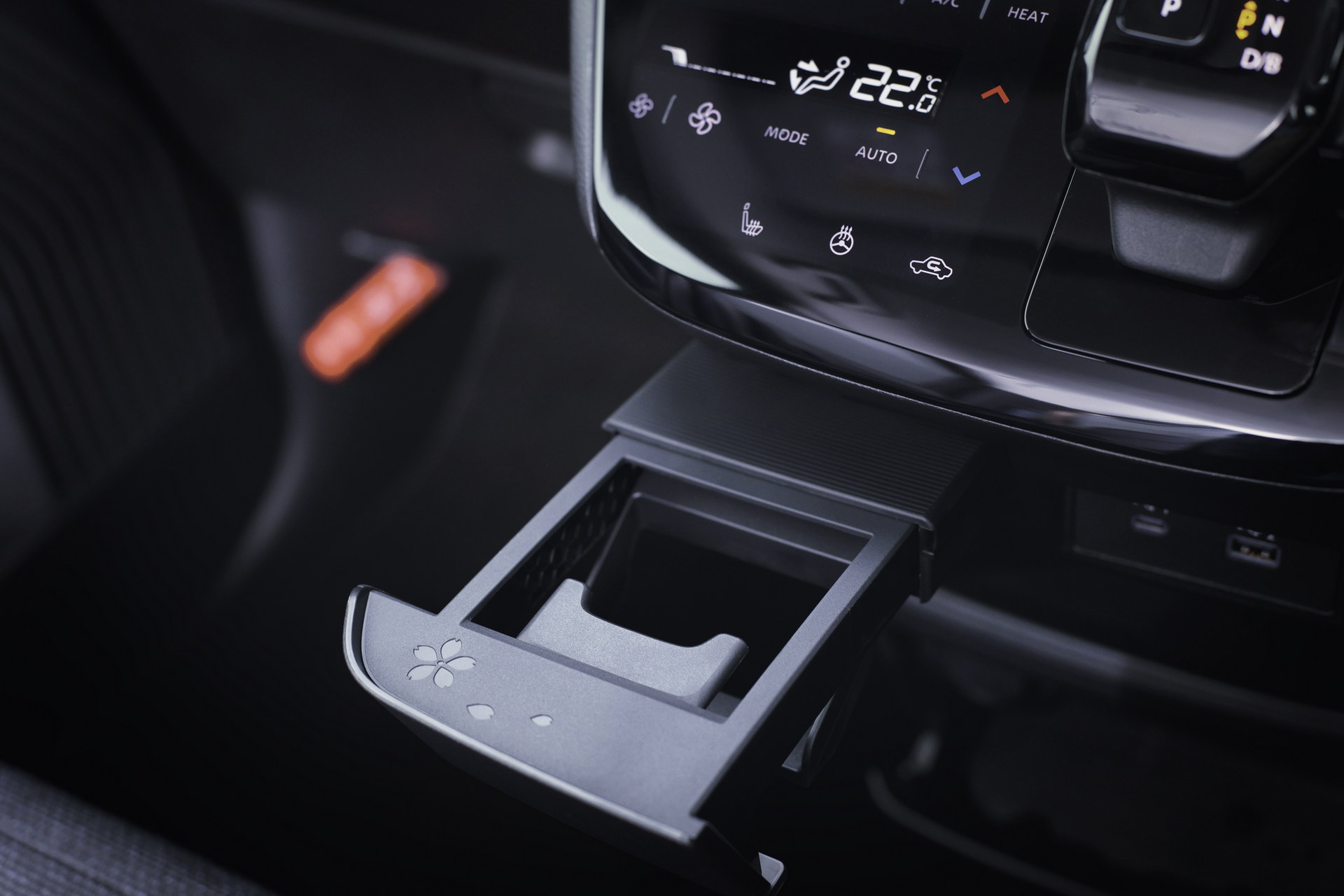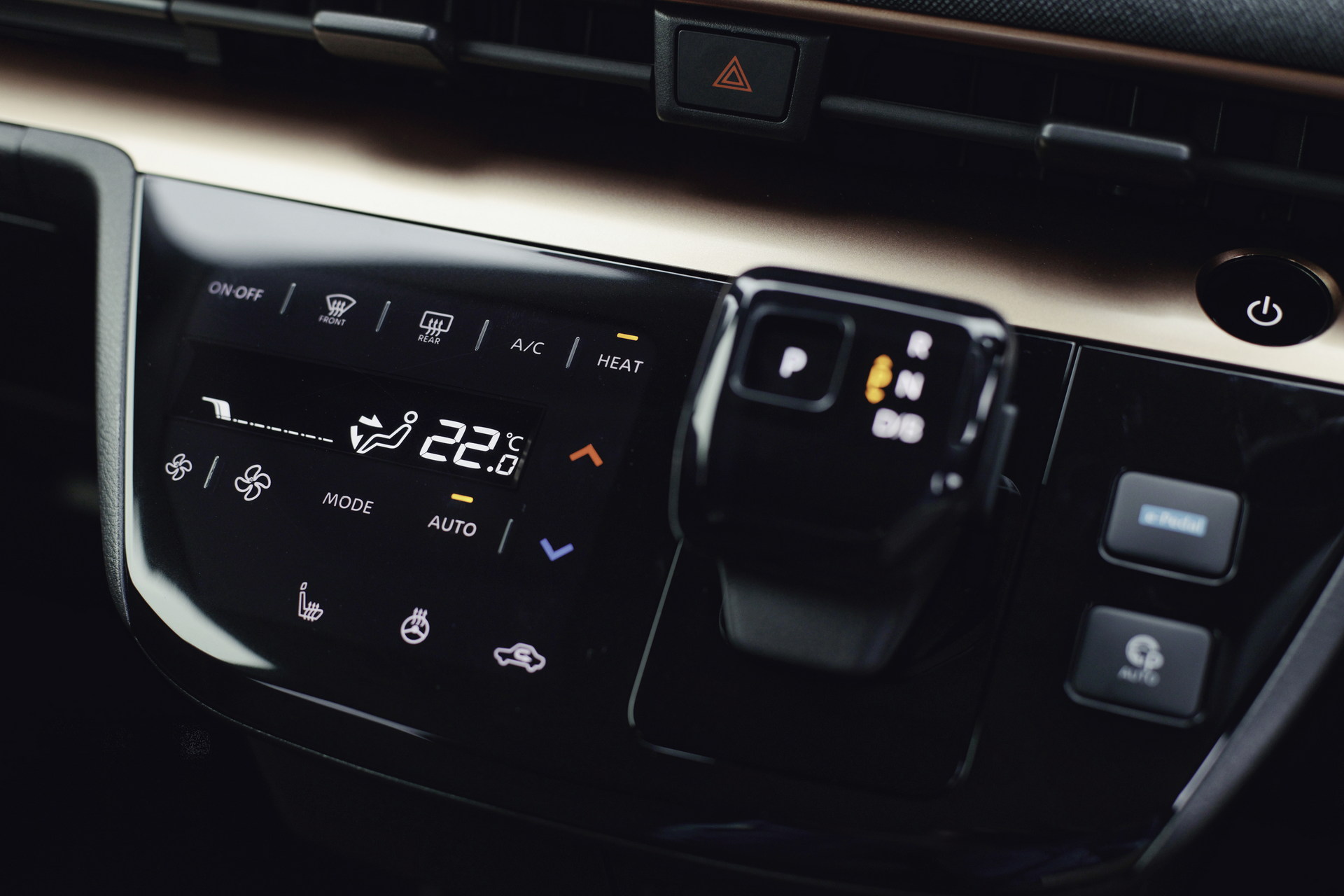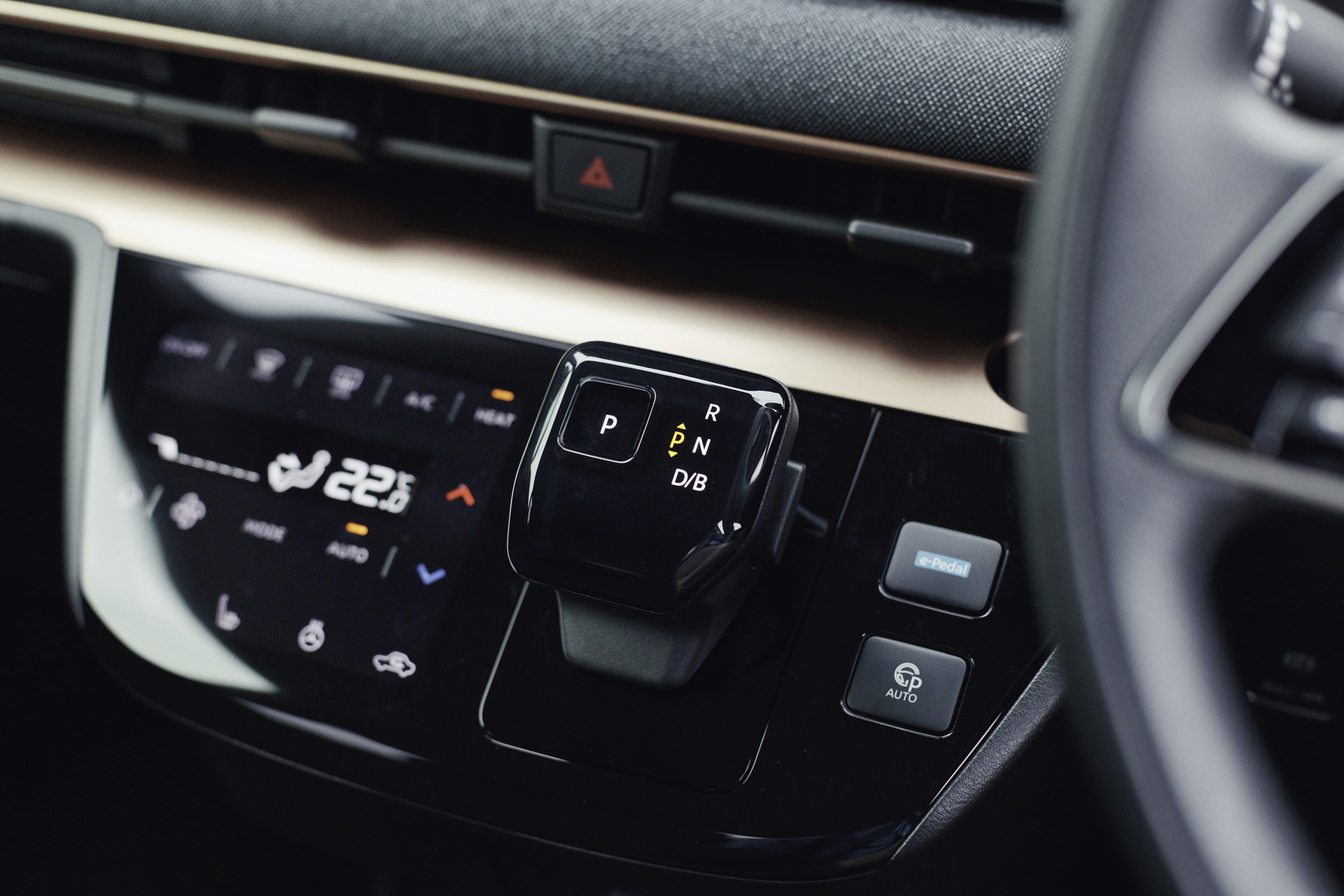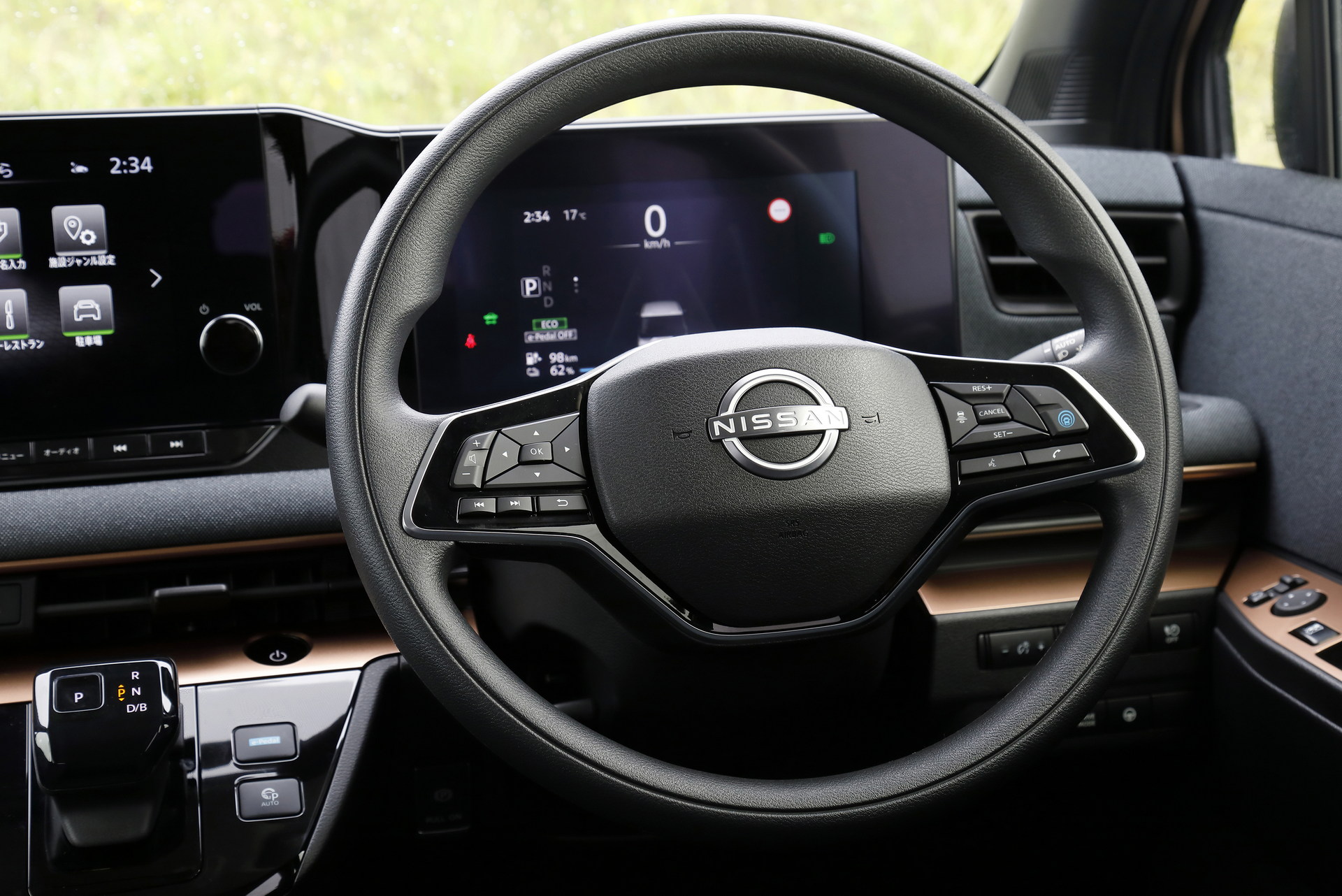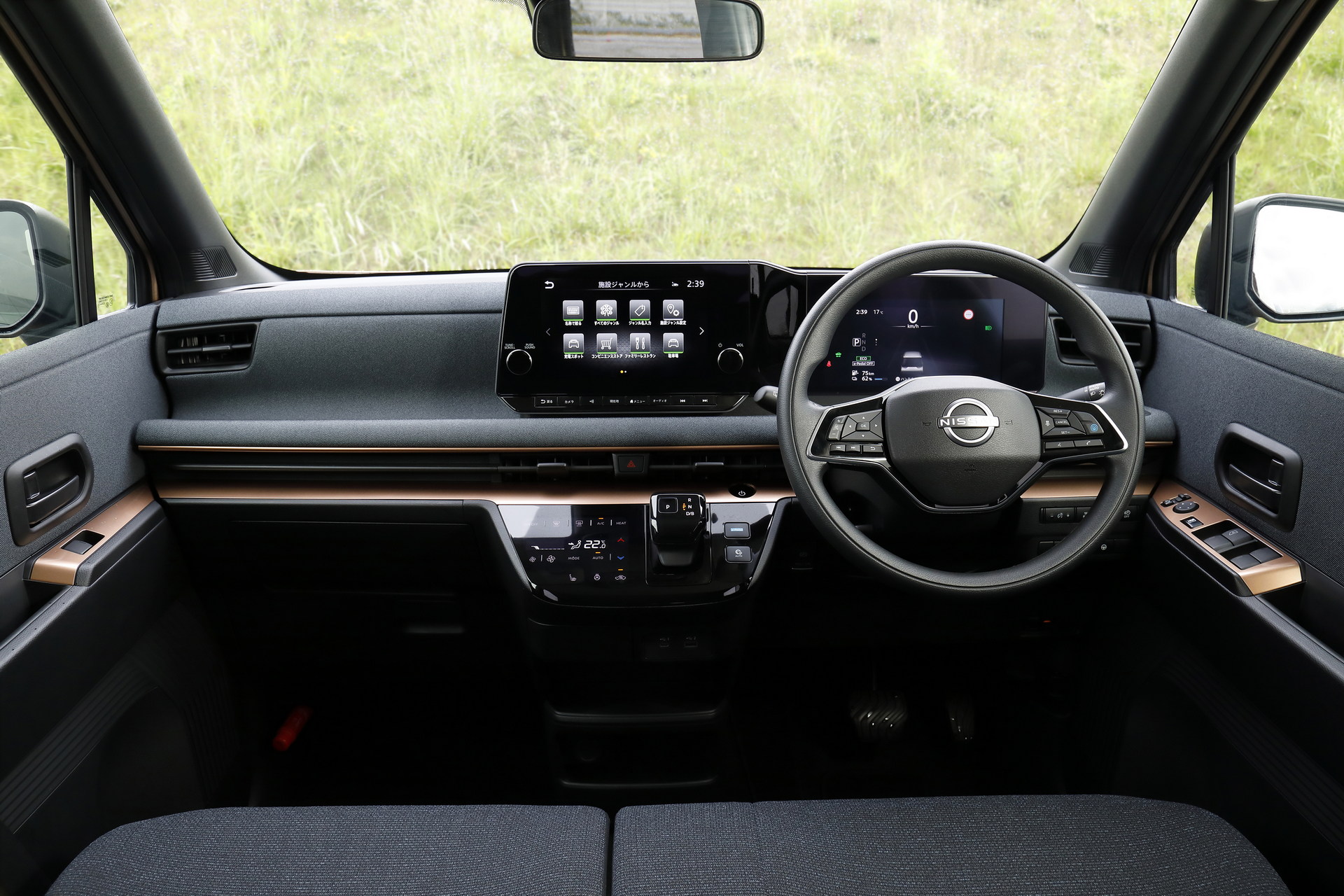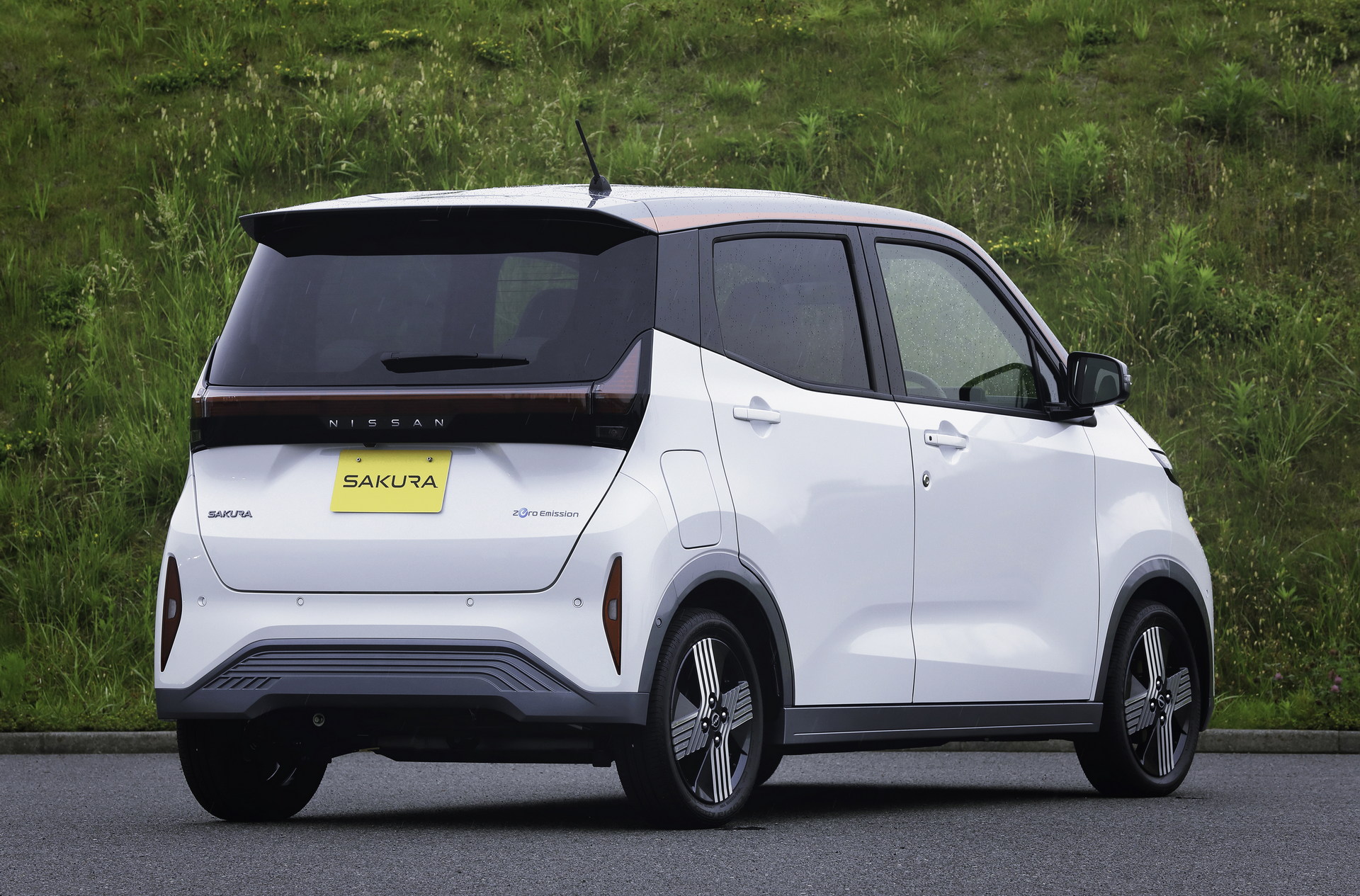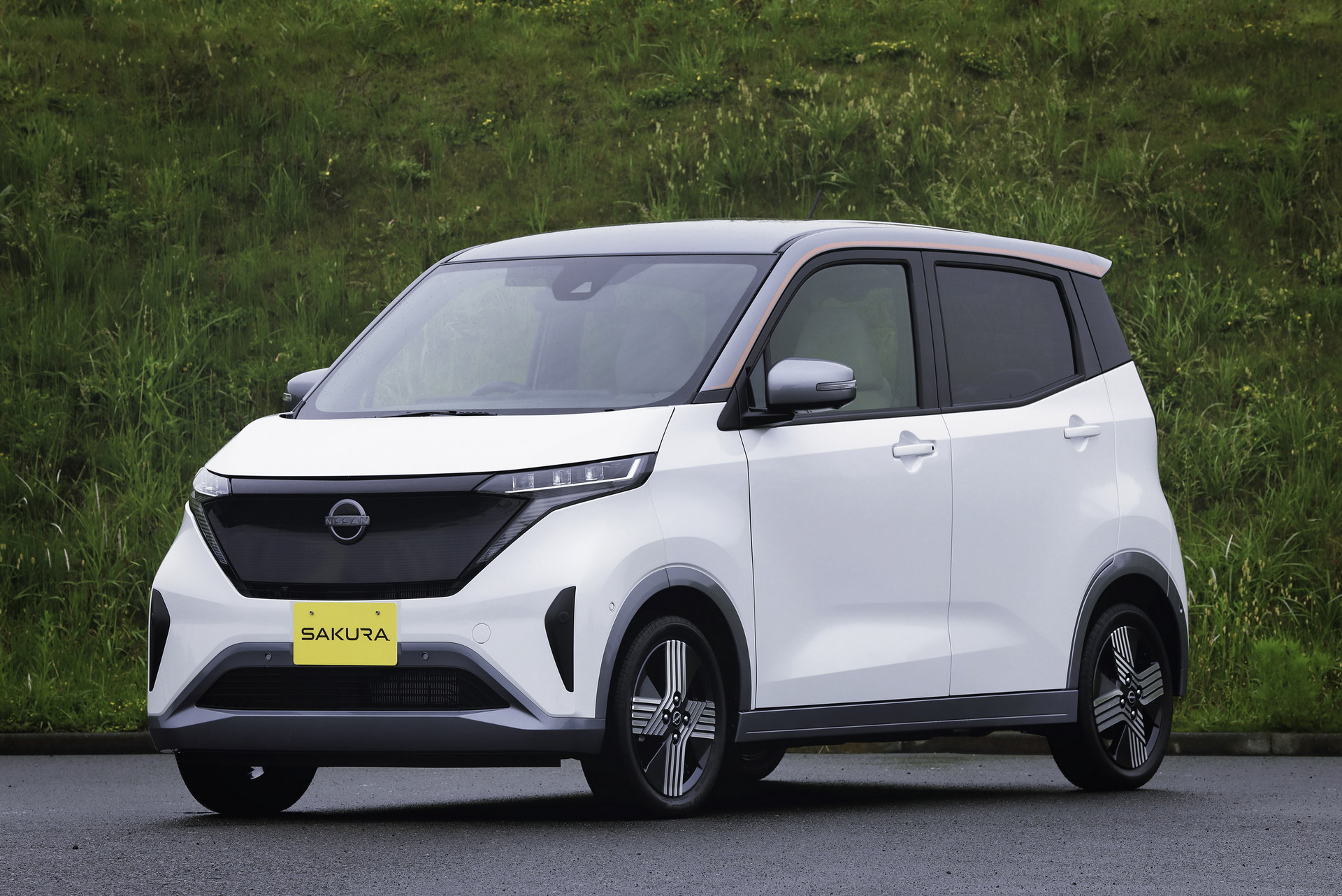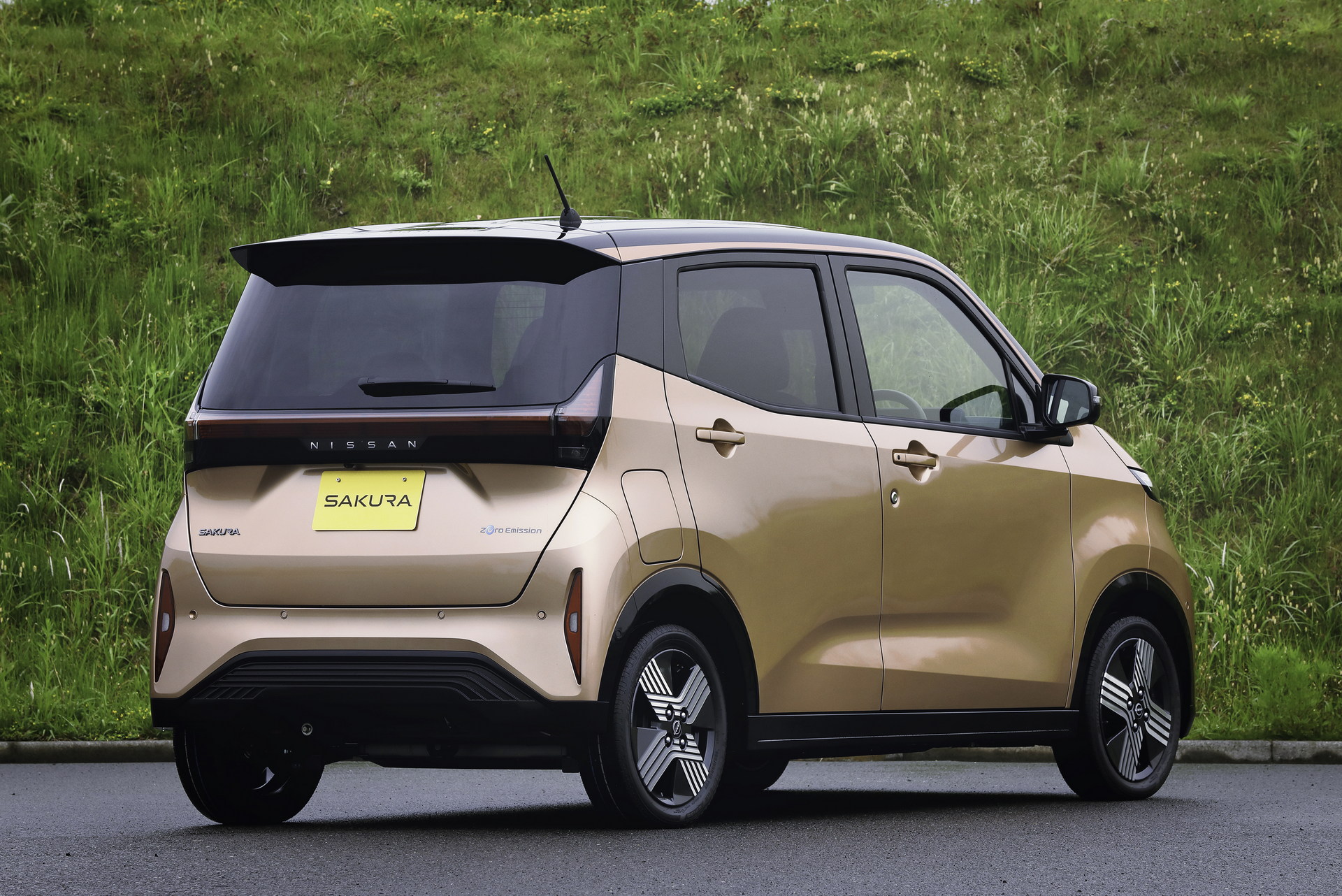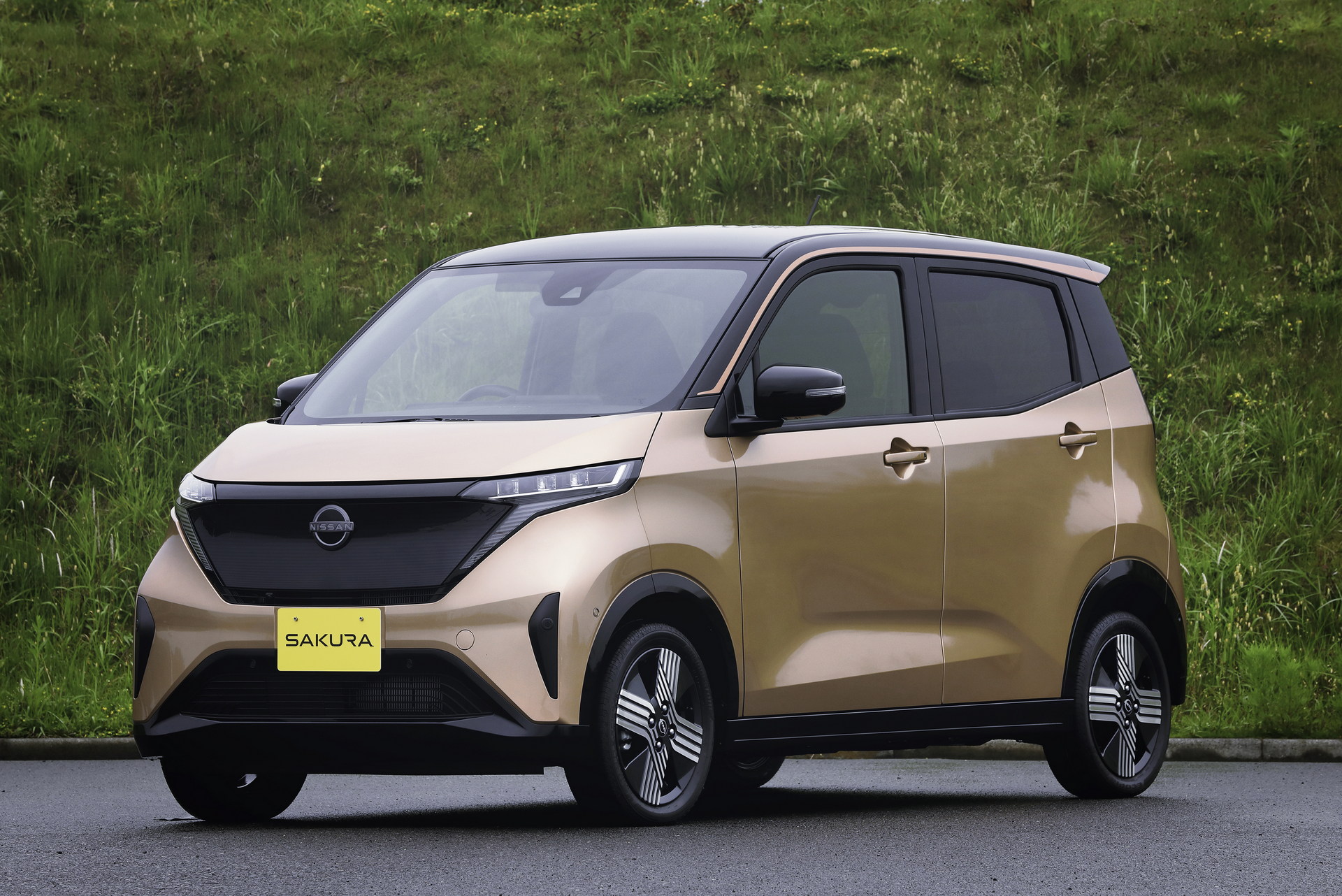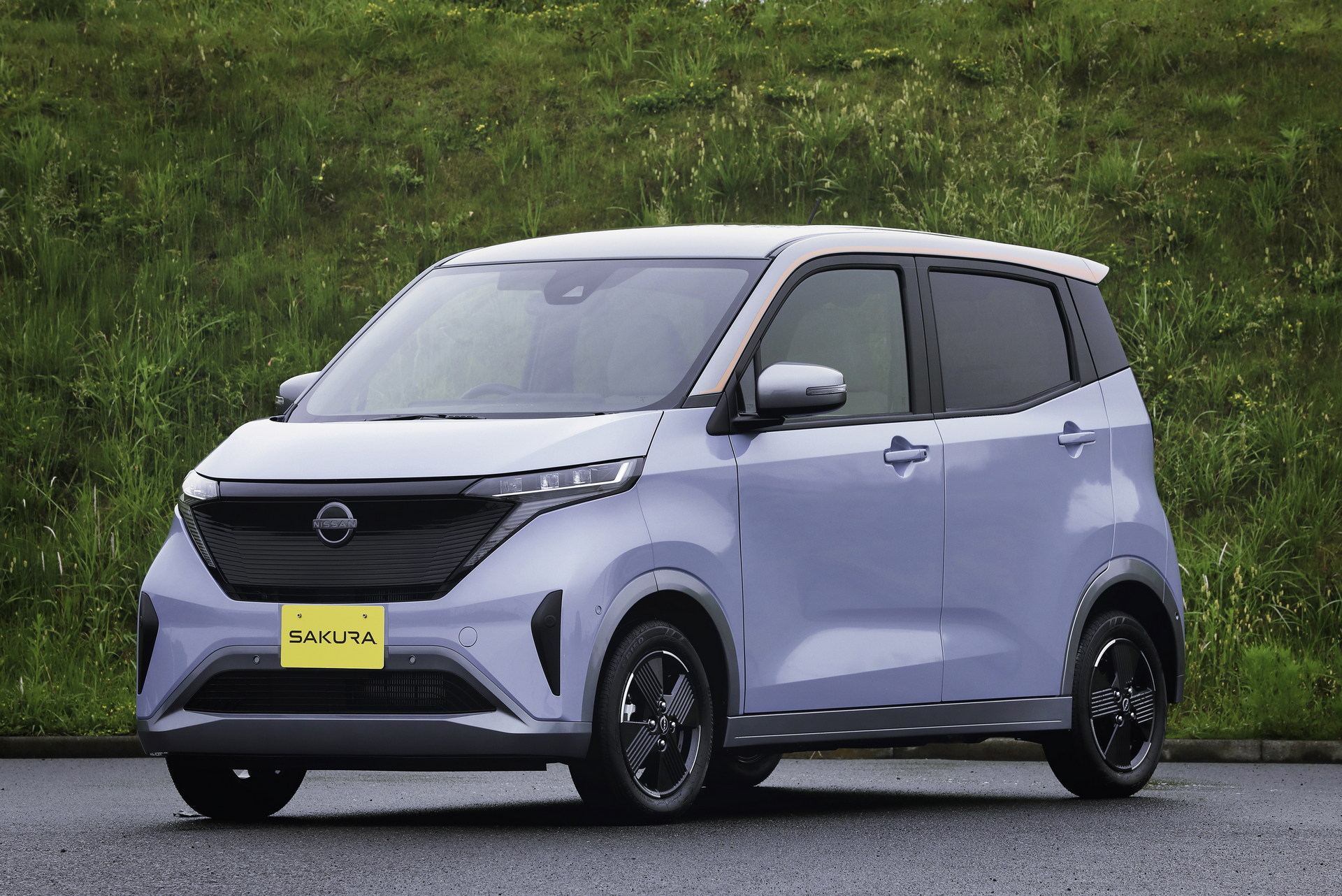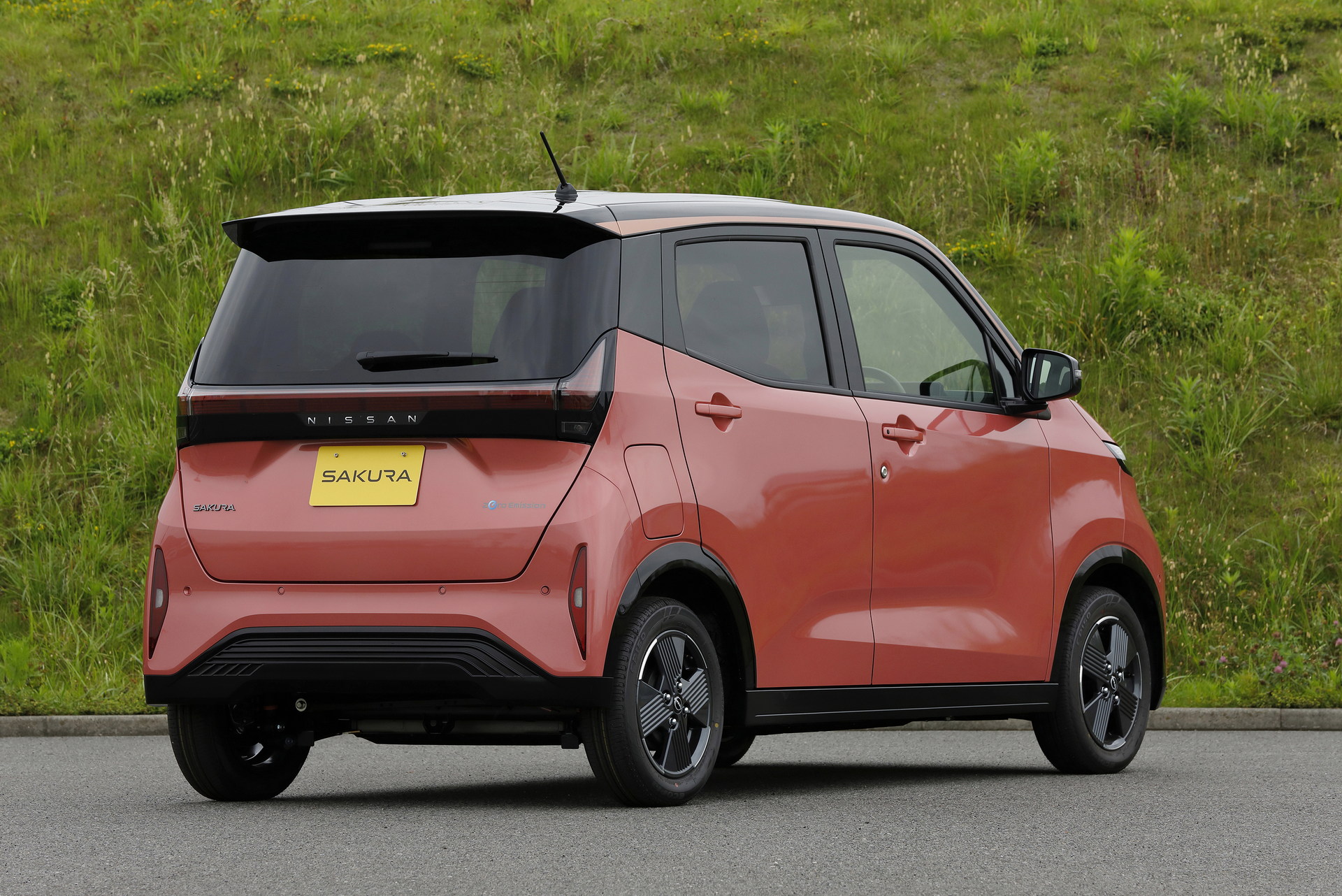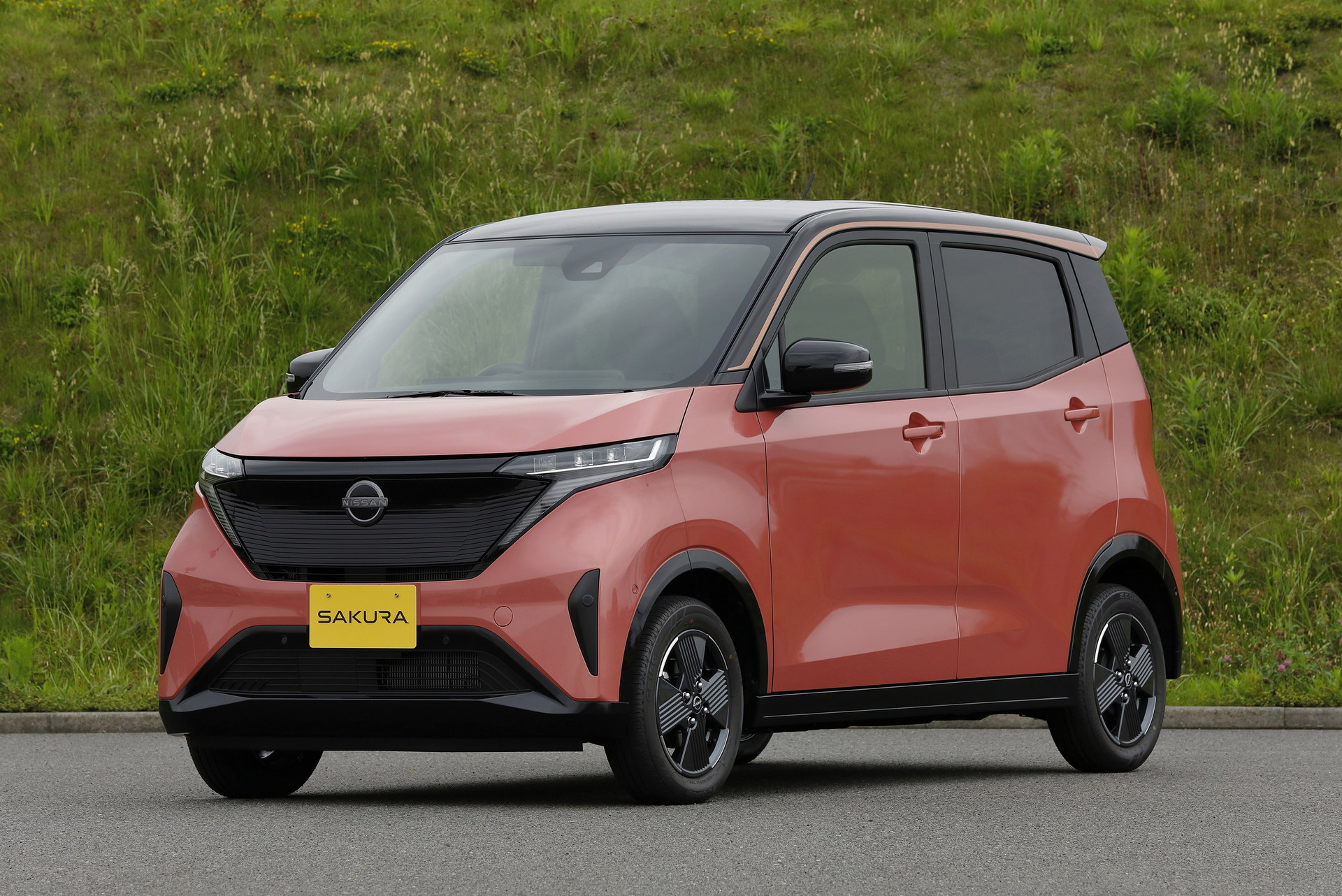Honoring its promise from last year, Nissan has unveiled its first fully electric kei car. The Nissan Sakura EV is the production version of the IMk concept from 2019, with the goal of making electric mobility more affordable to Japanese customers.
The model is named after the Japanese cherry blossom and looks very much like the concept car. Styling cues like the black-painted V-motion grille, the LED headlights and the alloy wheel pattern make it look like a miniature version of the Nissan Ariya. The design is an evolution of the theme introduced by the Dayz ICE-powered kei car with cleaner surfacing and more modern details. The Sakura is available in a wide range of fifteen colors for the exterior that can be combined with three interior colors (black, beige, and blue grey).
See Also: Nissan Previews Autonomous System With Clever Collision Avoidance, Teases New EV Crossover Too
Predictably, the footprint is tiny to comply with kei car regulations. The Sakura measures 3,395 mm (133.7 inches) long, 1,475 mm (58.1 inches) wide, and 1,655 mm (65.2 inches) tall, with a 2,495 mm (98.2 inches) wheelbase. Those figures make the Fiat 500 and the Honda e urban EVs look large in comparison. The turning radius is just 4.8 m (189 inches), allowing it to easily navigate on narrow Japanese roads.
The weight is rather high for kei car standards, ranging between 1,070 kg (2,359 pounds) and 1,080 kg (2,381 pounds) depending on the equipment. This is around 240 kg (529 pounds) more than the ICE-powered Dayz, showing the extra weight of electrification.
The smallest member of Nissan’s EV lineup is fitted with a single electric motor producing 63 hp (47 kW / 64 PS) and a respectable 195 Nm (144 lb-ft) of torque. There are three driving modes, Eco, Standard, and Sport, while top speed is limited to 130 km/h (81 mph). There is also the e-Pedal Step for one-pedal driving offering smooth regenerative deceleration.
The floor-mounted battery is quite small with a capacity of 20 kWh, enough for 180 km (112 miles) of WLTC range. It can also serve as a mobile power source during emergencies and power a home for a full day in an event of a power outage. A full charge of the battery will take 8 hours, but you can also charge it to 80 percent in around 40 minutes when plugged into a fast charger.
Nissan claims the Sakura EV comes with superior ride comfort, a quiet cabin, and enhanced stability due to the low center of gravity. Equipment is pretty generous for an urban vehicle, including ADAS like the ProPILOT Park (automated parking), a 7-inch digital instrument cluster, a 9-inch infotainment touchscreen with navigation, and auto climate control. Despite the tiny boot with 107 liters (3.8 cubic feet) of cargo space, the four-seater cabin appears to be roomy and comes with practical traits like a dashboard tray and cup holders.
The Nissan Sakura EV will be available in Japan starting this summer. Pricing ranges from ¥2,333,100 ($18,221) to ¥2,940,300 ($22,964) but if you include the clean energy vehicle subsidy that is available in Japan, you can buy a Sakura EV for as low as ¥1,780,000 ($13,912). Furthermore, Japanese customers will be able to purchase the Sakura EV online, communicating with a sales representative through a video chat.
A sister model to the Nissan Sakura EV is the Mitsubishi EK X EV which is sharing the same underpinnings but features a restyled exterior staying closer to its ICE-powered derivatives. Both models will be produced at the Mizushima plant in Japan.








